Moisture is relentless, yet the right bathroom flooring turns a slippery zone into a stylish, safe sanctuary. After combing through the latest research on durability, eco-credentials, slip ratings, and 2025 design forecasts, I distilled twenty practical ideas that balance beauty with real-world performance. From classic porcelain to cutting-edge microcement, each option below highlights where it shines, what to watch for, and a quick tip to help you decide whether it belongs under your feet.
1. Porcelain Tile Bathroom Flooring
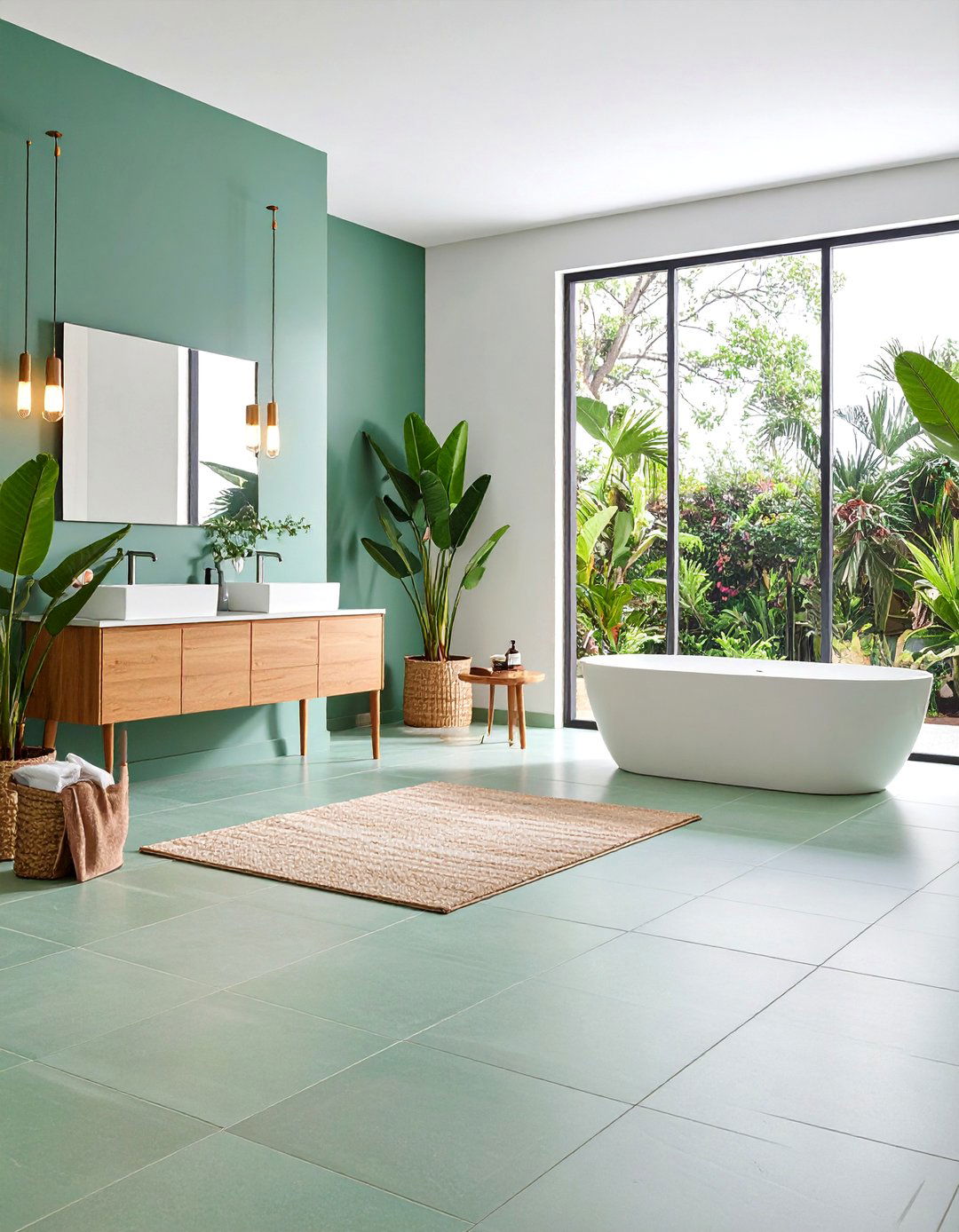
A sleek porcelain tile floor shrugs off splashes thanks to a water-absorption rate below 0.5 percent, making it one of the most resilient bathroom flooring choices available. Fired at higher temperatures than ceramic, it resists scratches and stains and stands up to pets’ claws or high-heel dents just as gracefully. Opt for rectified edges and large modules—24 inches and up—if you prefer fewer grout lines and a spa-like expanse; just remember to seal the grout to cut cleaning time. Matte or textured “grip” finishes add valuable traction for kids and older family members. Finally, pairing porcelain with an uncoupling membrane helps prevent cracks in homes that experience seasonal subfloor movement.
2. Patterned Checkerboard Ceramic Bathroom Flooring
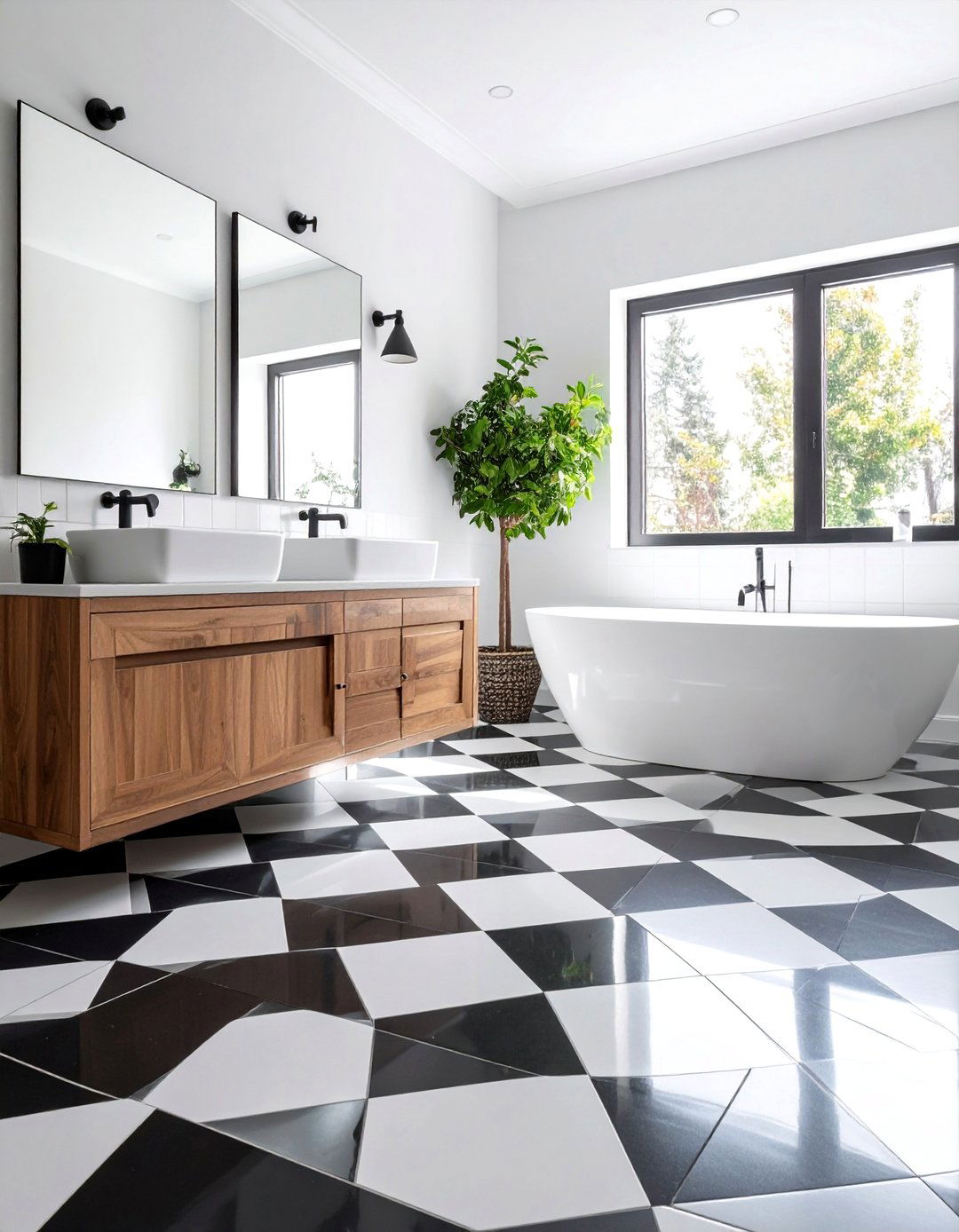
Looking to energize a tired space? A bold black-and-white checkerboard ceramic floor instantly delivers vintage drama yet feels fresher than ever in 2025 design roundups. Unlike earlier decades’ slippery gloss tiles, today’s versions come with high DCOF (Dynamic Coefficient of Friction) ratings, so you can enjoy the graphic punch without worrying about tumbles. Budget-friendly 12-inch squares keep the installation straightforward, while diagonal layouts visually widen narrow ensuites. To prevent pattern “creep,” snap chalk lines frequently and start tiling from the room’s center.
3. Luxury Vinyl Plank (LVP) Bathroom Flooring
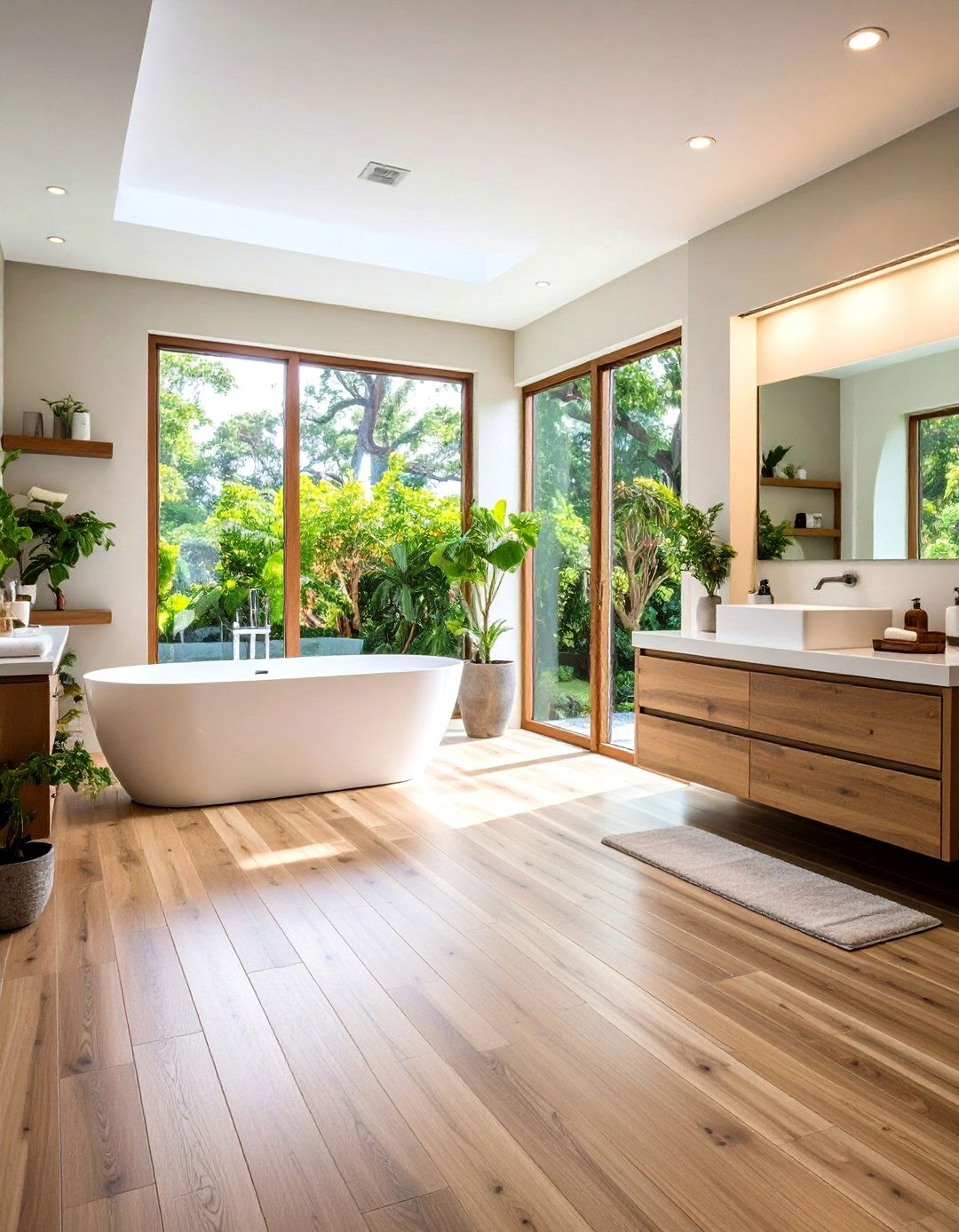
For unbeatable warmth underfoot and convincing wood or stone visuals, luxury vinyl plank wins converts daily. Its PVC core and UV-cured wear layer make it 100 percent waterproof, and click-lock edges simplify DIY installs. Choose a product with an attached antimicrobial pad to muffle footsteps on hollow subfloors and resist mildew in humid climates. Because LVP expands slightly, leave a 1⁄4-inch gap around walls and tuck the edges under baseboards for a polished finish.
4. SPC Rigid-Core Vinyl Bathroom Flooring
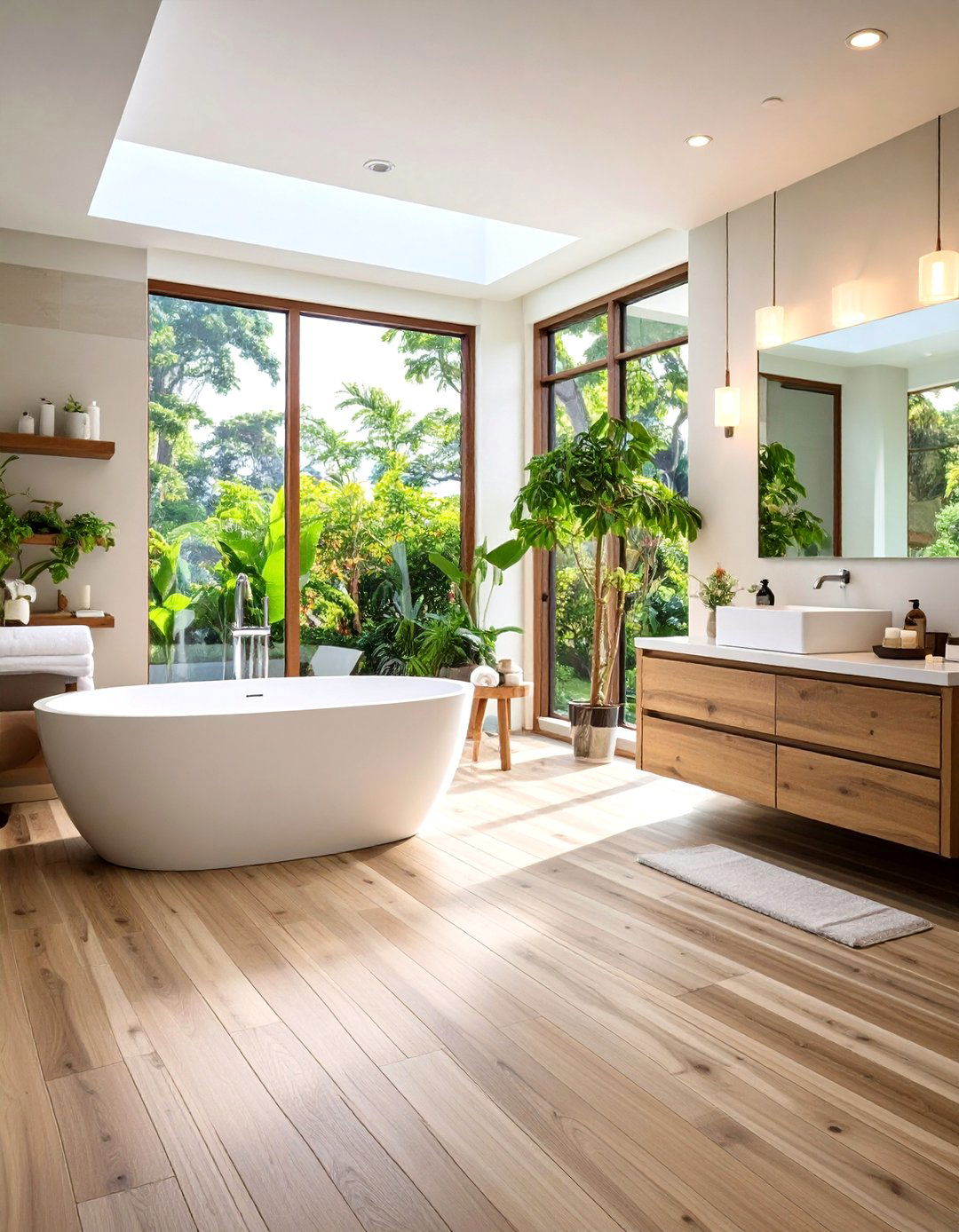
Unlike flexible LVP, stone plastic composite (SPC) flooring packs powdered limestone into its core, creating a dent-proof board that doesn’t telegraph minor subfloor dips. Thinner yet tougher, SPC performs well over radiant heat mats, and its lower thermal expansion means fewer transition strips in larger baths. When cutting planks, use a fine-tooth miter saw and score the wear layer first to prevent brittle chipping.
5. WPC Waterproof Vinyl Bathroom Flooring

Wood plastic composite (WPC) planks add airy comfort thanks to a foamed core that feels slightly softer and warmer than SPC or tile. The trade-off is marginally lower impact resistance, so reserve WPC for powder rooms or principal suites rather than high-traffic kids’ baths. Because WPC clicks together easily, renters and first-time DIYers often finish a standard bathroom in under a day.
6. Waterproof Laminate Bathroom Flooring
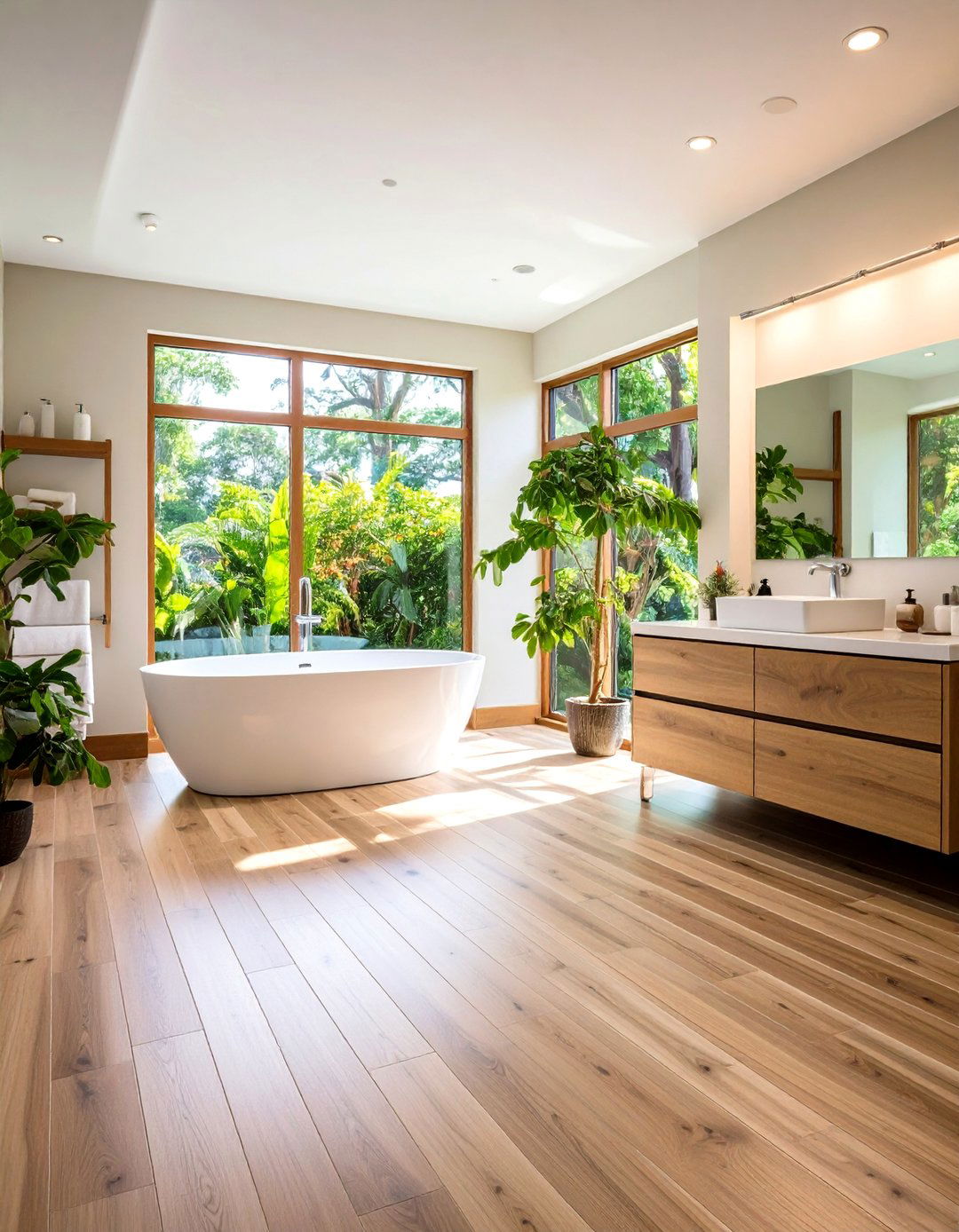
Surprisingly, laminate now rivals vinyl for water defense: new edge coatings let many products withstand puddles for 24–30 hours without swelling. Look for AC4 or AC5 wear ratings if you expect rolling laundry carts or wheeled vanity stools. Peel away perimeter planks every few years to inspect for hidden leaks—a five-minute check that preserves warranties.
7. Marble Bathroom Flooring
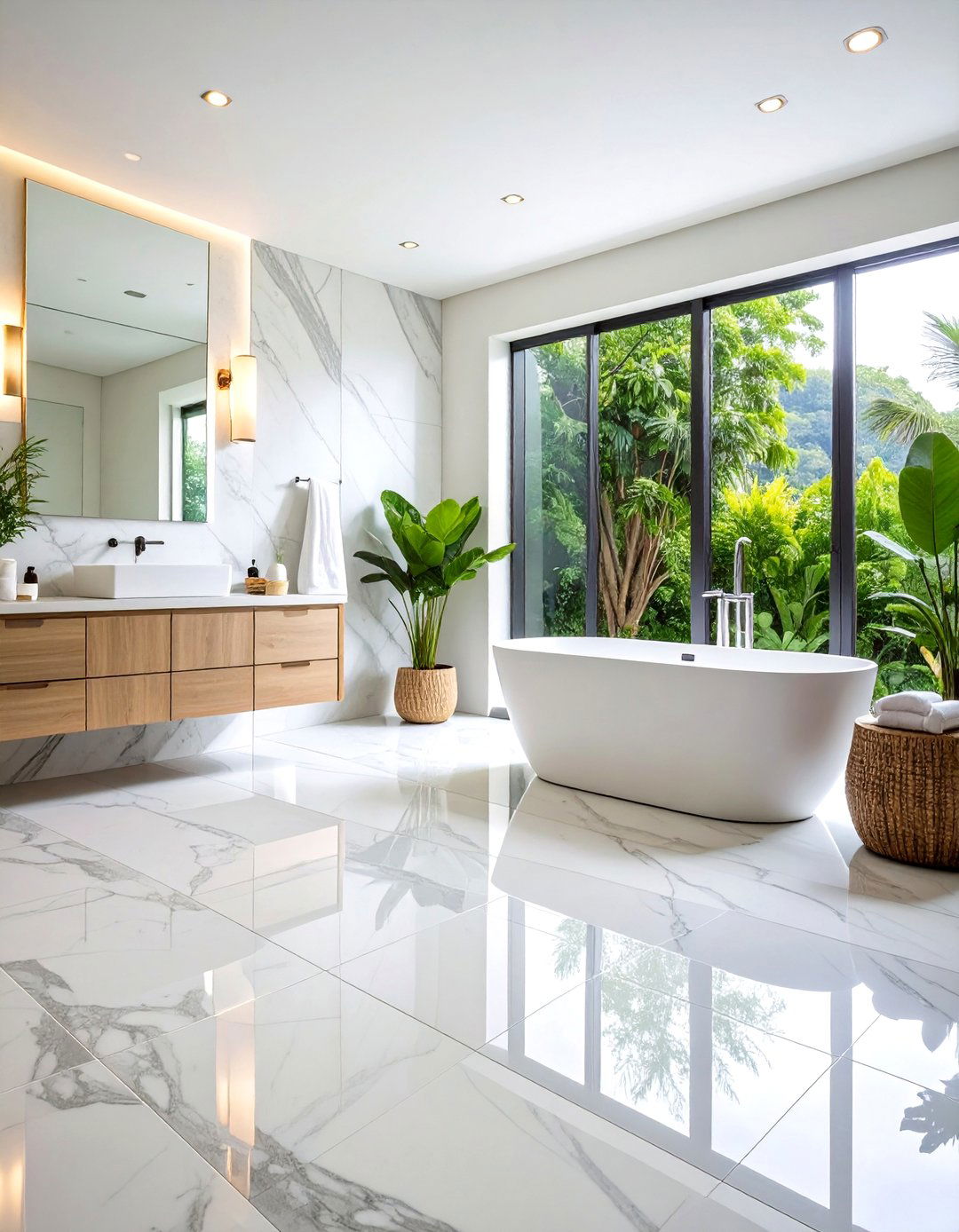
Certainly luxurious, marble bathroom flooring brings subtle veining that never repeats, adding timeless value. Because calcite is porous, a penetrating sealer and tight grout joints are non-negotiable. Honed finishes hide etches from dropped cosmetics better than high polish. Pair marble with towel-warmer rails; the gentle radiant heat offsets the stone’s naturally cool feel on winter mornings.
8. Slate Bathroom Flooring
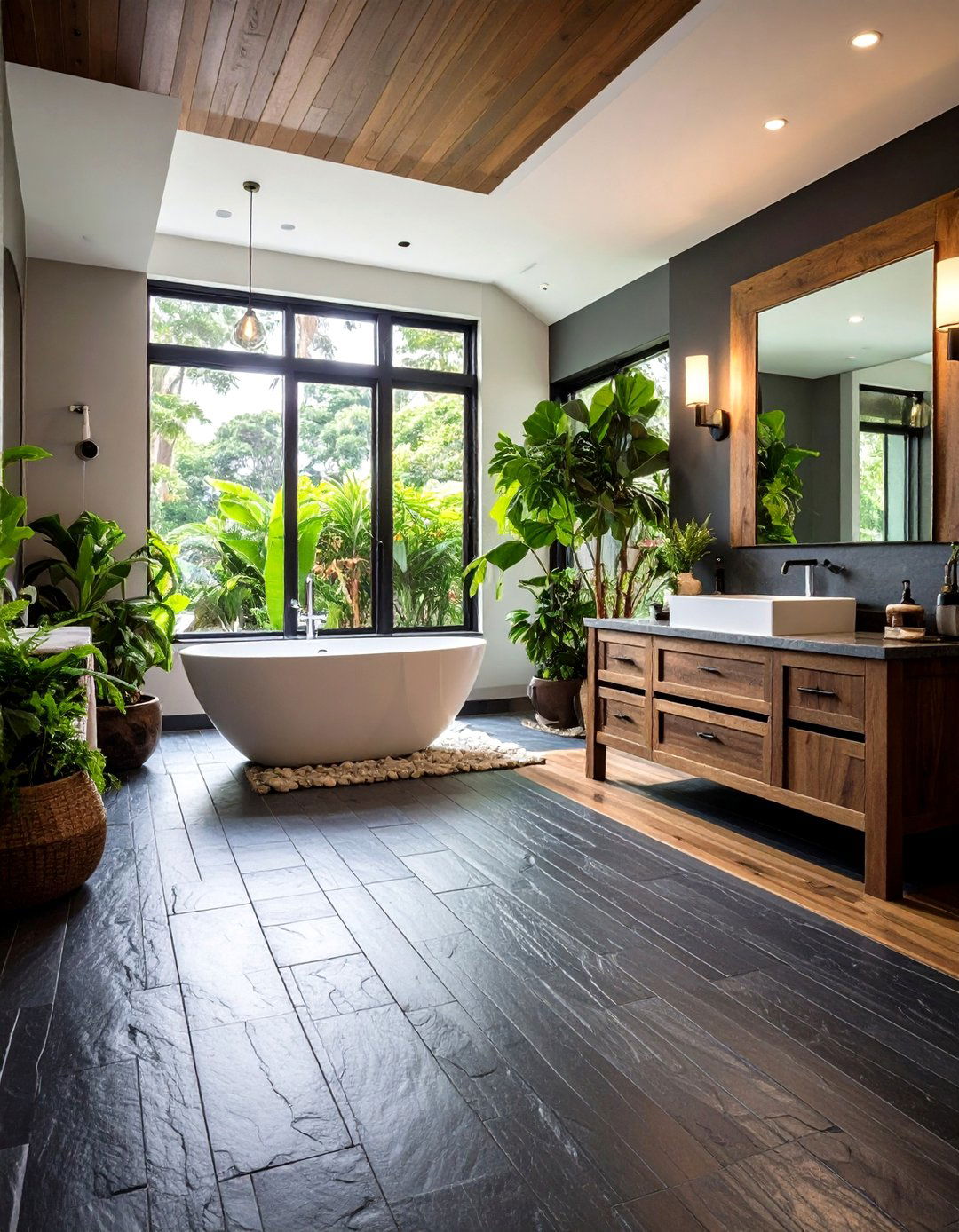
Despite its rugged look, slate sports a water-absorption rate as low as 0.4 percent, beating many man-made tiles at moisture defense. Subtle clefting offers natural slip resistance even when soapy water spills. Dark charcoal or multicolor varieties disguise dirt between cleanings—handy in family spaces. Yet slate can flake if installed over uneven concrete; leveling compounds and back-buttering each tile eliminate voids that trigger delamination.
9. Terrazzo Bathroom Flooring
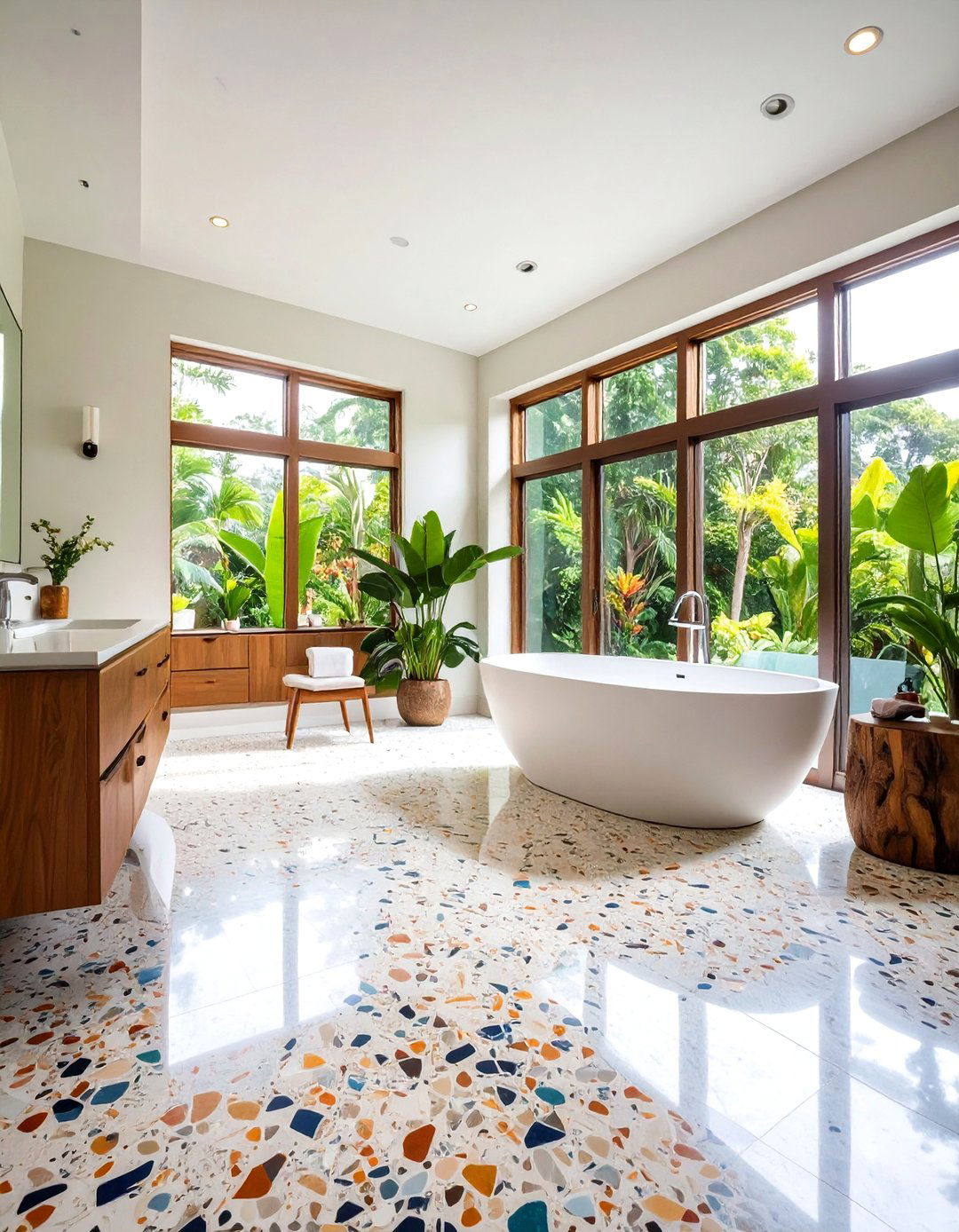
Terrazzo—either poured or in ready-made porcelain slabs—revives mid-century glamour with speckled chips that hide everyday lint. Non-porous terrazzo resists puddles, and its seamless surface makes wheelchair access effortless. Prefabricated terrazzo-effect tiles cut costs dramatically; grout with a matching epoxy to keep the pattern uninterrupted. For chilly climates, combine terrazzo with electric heat mats because its thermal mass distributes warmth evenly.
10. Recycled Glass Mosaic Bathroom Flooring
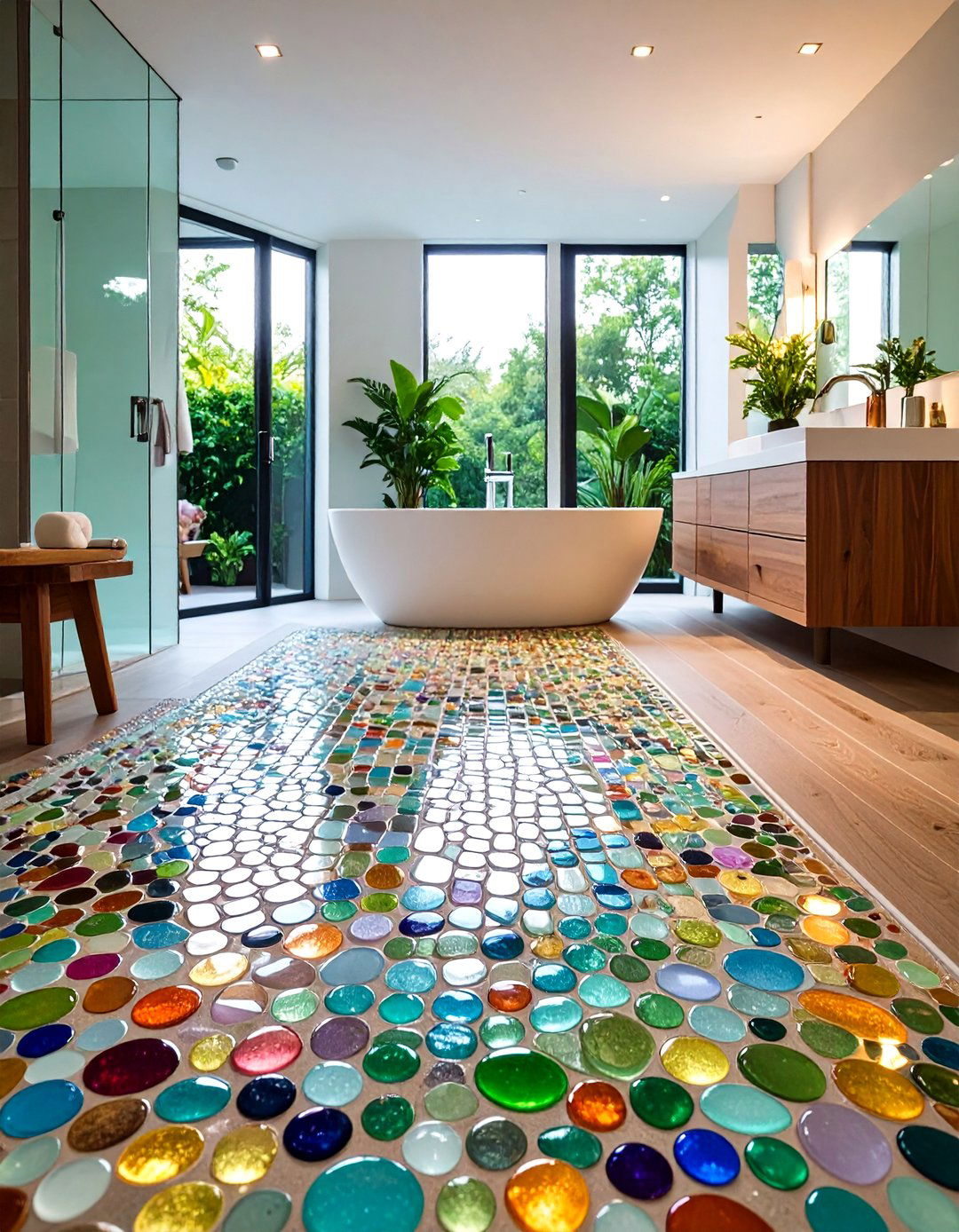
Glass mosaics fashioned from post-consumer bottles score high on sustainability charts while shimmering like water itself. Textured wafer-back dots increase grip, and multiple grout lines create micro-traction across the floor. Since grout color alters overall tone, test a small board with your lighting before committing. A premium latex additive in the thin-set guards against glass expansion and helps prevent cracking.
11. River-Pebble Bathroom Flooring

Unlike flat tiles, a pebble shower or bath floor offers a gentle foot massage and natural anti-slip texture. Pebbles handle daily wear but need diligent sealing to thwart soap-film stains in grout valleys; penetrating sealers last longer than topical versions. To speed drainage, order sliced (flat-top) sheets and set the mortar bed to a consistent 1⁄4-inch-per-foot slope.
12. Sealed Cork Bathroom Flooring
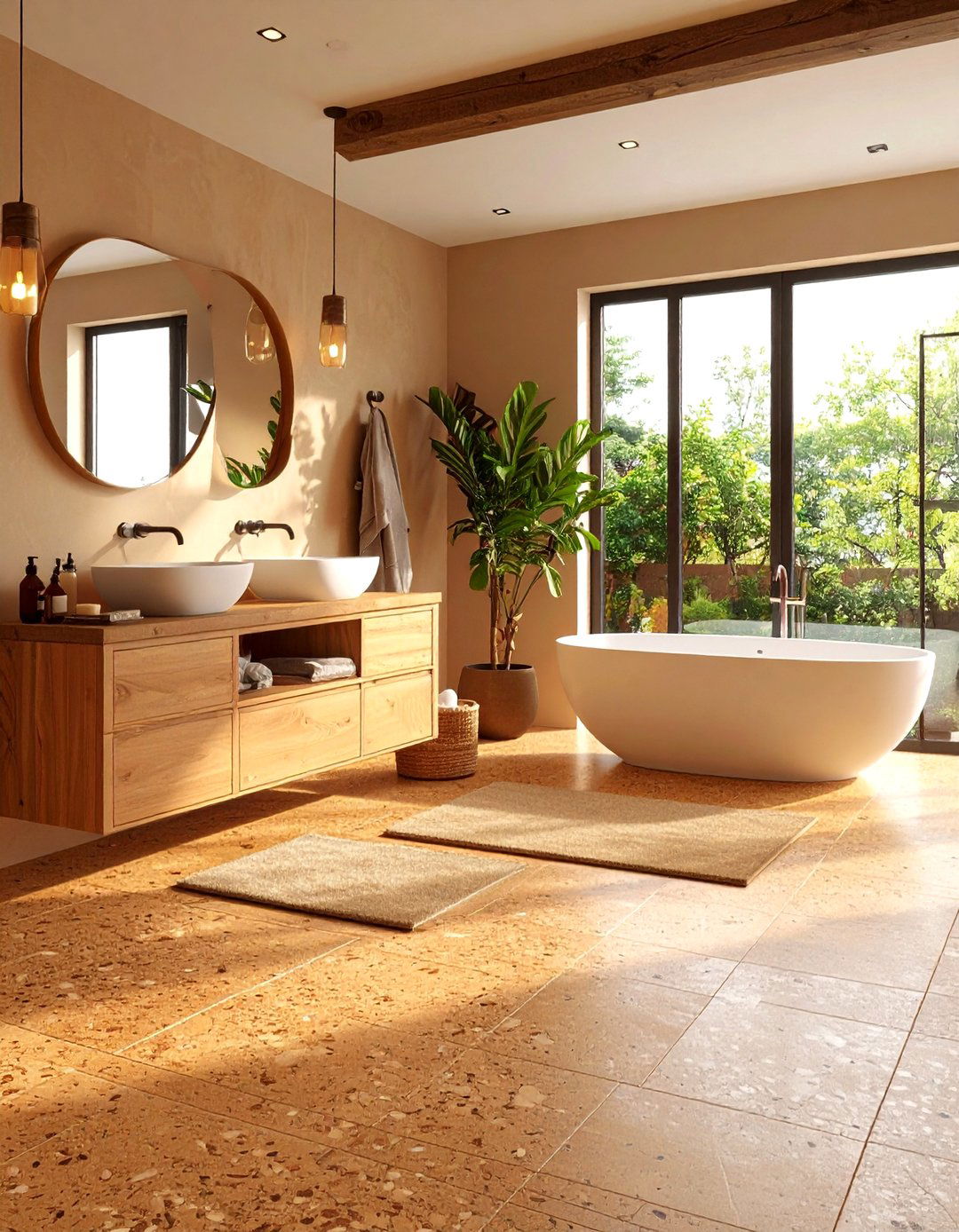
Soft, springy cork feels as cozy as a yoga mat, absorbs sound, and comes from a renewable bark harvest, making it a sustainability darling. Modern polyurethane finishes add water resistance, but spills should still be wiped quickly to prevent staining. Glue-down tiles reduce the risk of moisture sneaking under click-lock seams; float them only if your subfloor is bone dry.
13. Engineered Bamboo Bathroom Flooring

Waterproof engineered bamboo strands are compressed with resins that let certain planks endure standing water for up to 30 hours—a huge leap from traditional bamboo’s limits. Look for “strand-woven” labels and a click-lock SPC or magnesium-oxide core. Big-box samples often show color variation; mix cartons randomly during install for a balanced tone.
14. Engineered Hardwood Bathroom Flooring
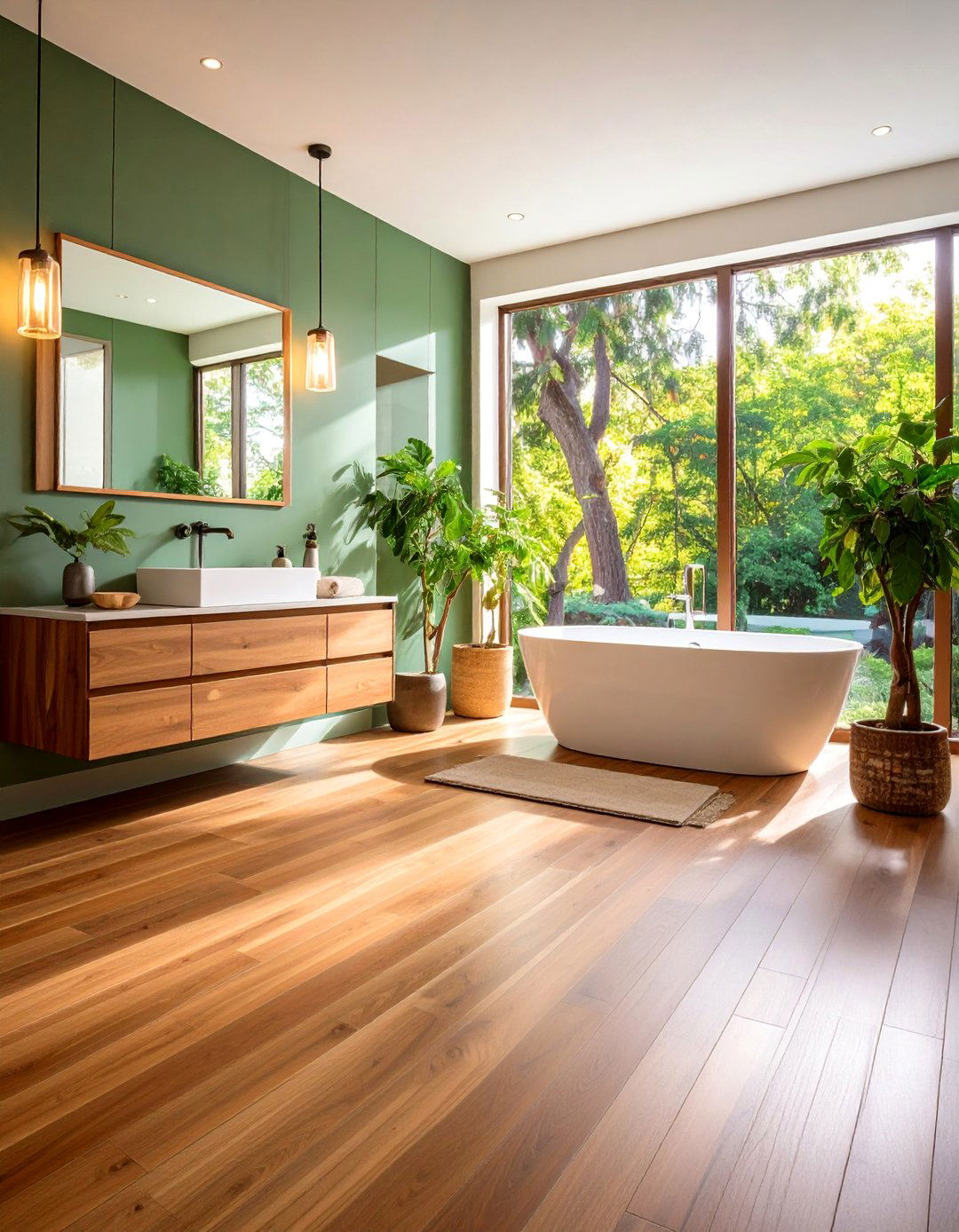
Advances in edge-sealants and hyper-dense cores now allow select engineered hardwood systems to advertise 36-hour waterproof protection without sacrificing real-wood veneer beauty. Nevertheless, placing a bath-mat runner near tubs remains smart practice, as puddles left longer can still seep through micro-gaps. Use the manufacturer’s matching touch-up pen on inevitable nicks to keep moisture from finding raw wood.
15. Microcement Bathroom Flooring
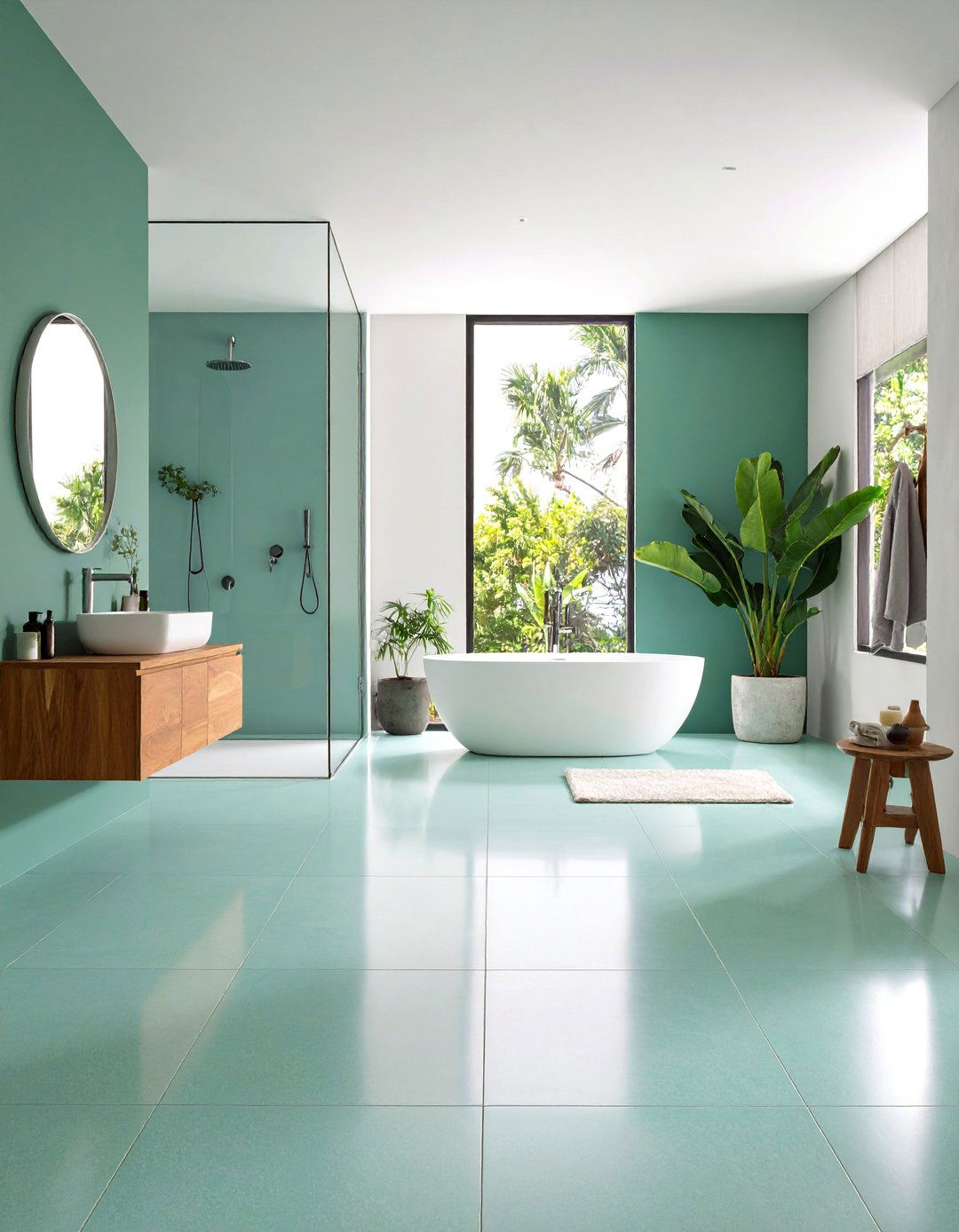
With just 2–3 millimeters of thickness, microcement coats a floor, curb, and even the walls for a seamless wet-room aesthetic that eliminates grout maintenance. Pigments run through the mix, so minor chips stay the same color. A two-part polyurethane topcoat adds slip resistance; select a satin rather than high-gloss finish to reduce glare and hide footmarks. Because curing is humidity sensitive, ventilate well or run a dehumidifier during install.
16. Rubber Bathroom Flooring
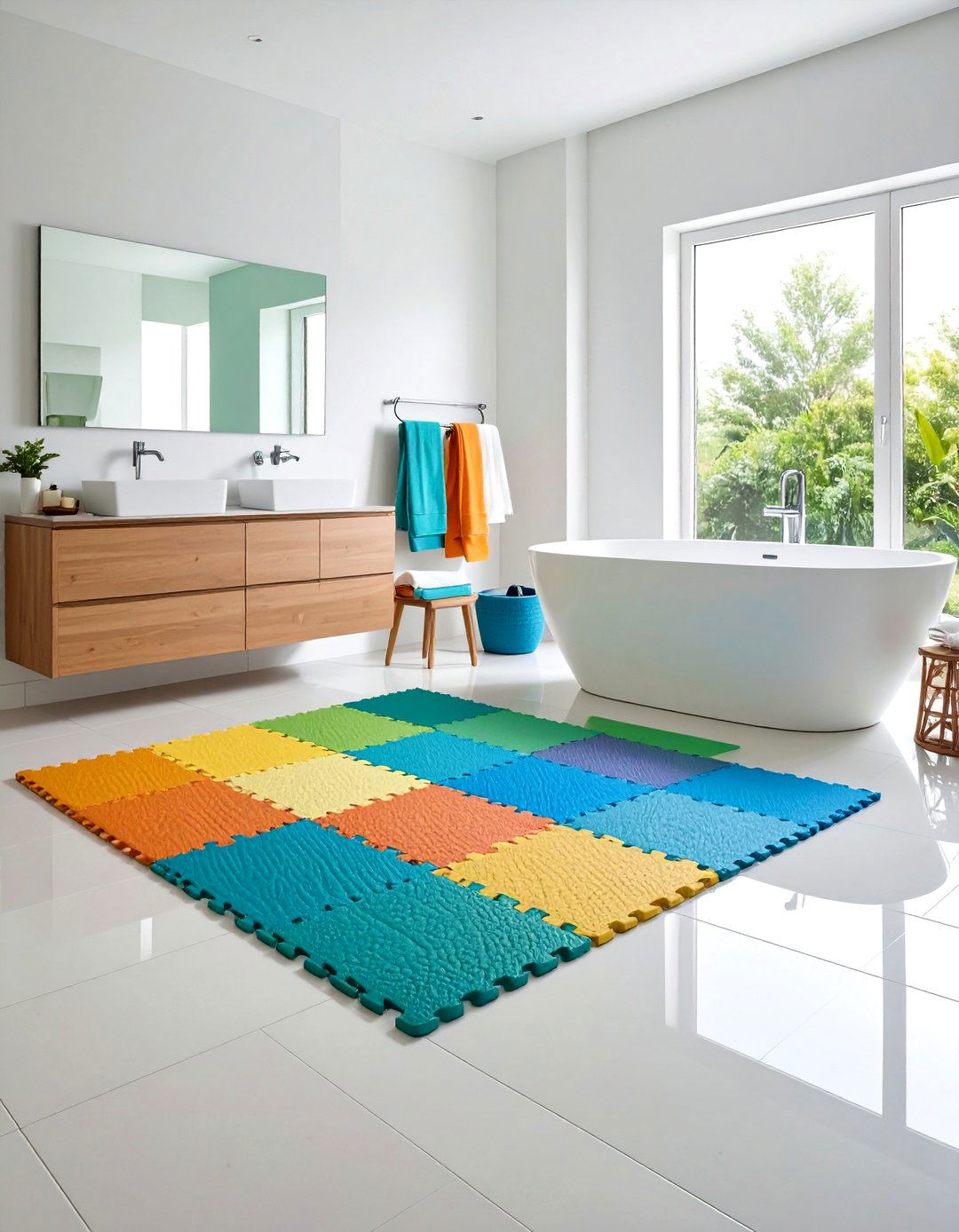
Rubber’s natural elasticity cushions joints and deadens sound, all while delivering built-in traction even when drenched. Available in rolls or puzzle-piece tiles, it comes in cheerful hues that brighten windowless baths. Commercial-grade variants resist UV yellowing beneath skylights, but they can darken under hair-dye spills, so keep an alcohol-based cleaner handy for quick wipe-ups.
17. Heated Radiant Bathroom Flooring

Sub-floor electric or hydronic mats pair with almost any rigid surface and warm both tile and toes in minutes while running 15–30 percent more efficiently than forced-air duct heat. Install an occupancy-sensor thermostat to cut energy costs, and embed the cables in self-leveling compound for a perfectly flat base that supports large-format tile without lippage.
18. Slip-Resistant Textured Porcelain Bathroom Flooring
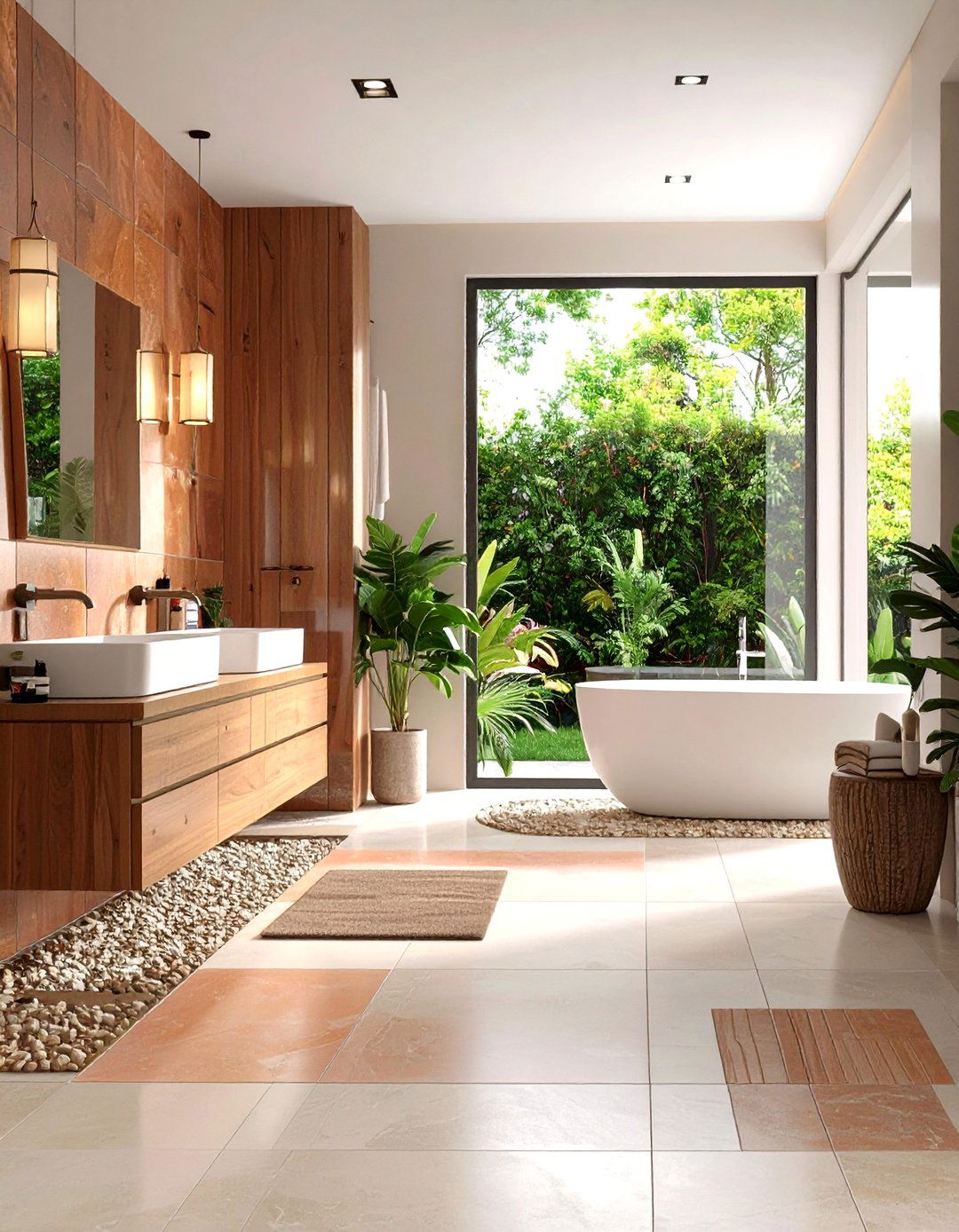
Textured porcelain offers R11 or higher slip ratings, meeting universal-design guidelines for older adults without sacrificing style. Micro-grooves or sand-blasted surfaces grip bare feet yet remain easy to mop compared with rubber. For added safety, specify rounded bullnose edges on steps and thresholds to reduce trip hazards.
19. Large-Format Tile Bathroom Flooring
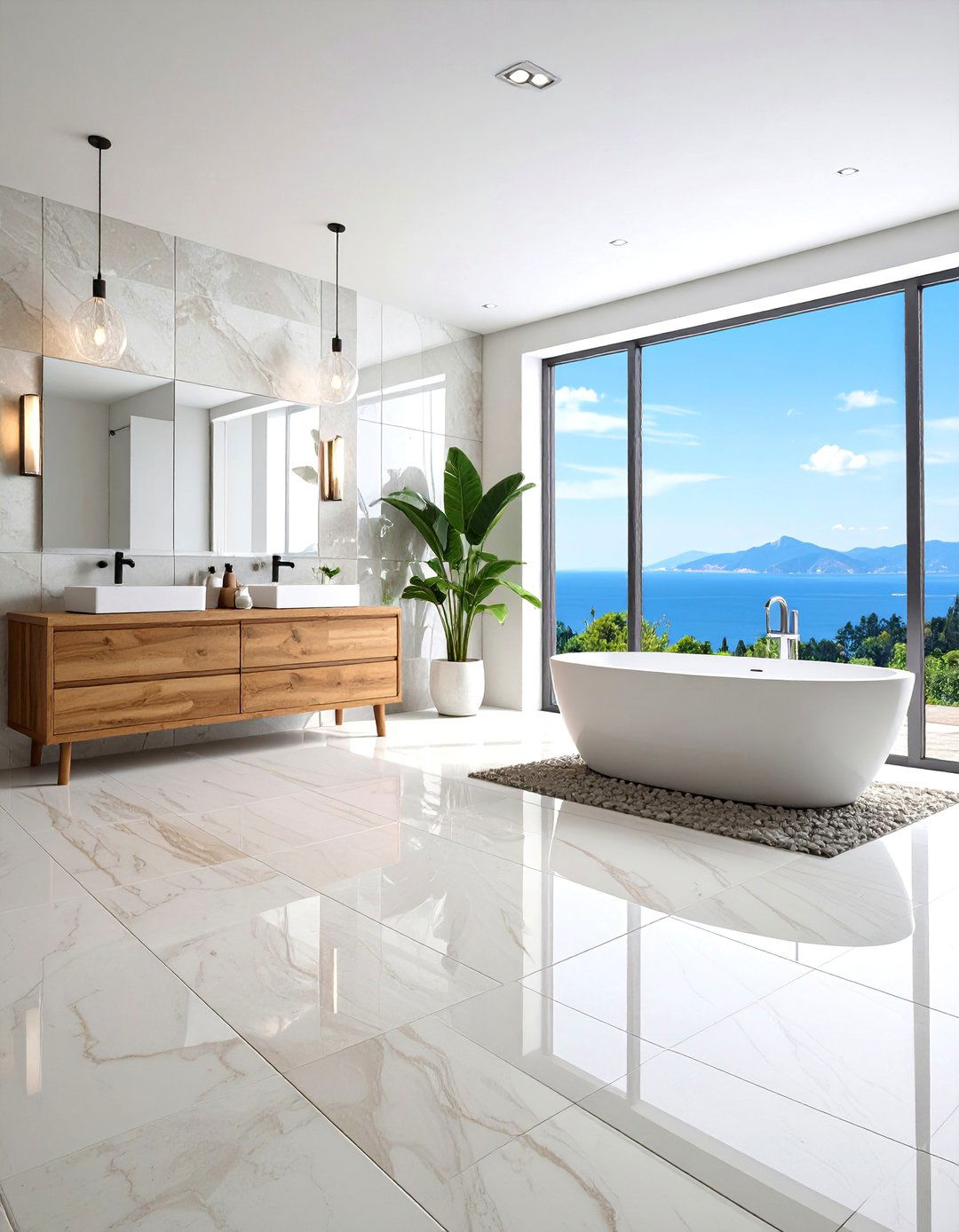
Oversized slabs—sometimes 30 × 60 inches or larger—reduce grout lines to a whisper and visually enlarge compact baths. Use an “LFT”-rated thin-set mortar and a leveling-clip system to keep big panels perfectly plane. Two installers and continuous suction cups are worth the rental fee; a single cracked tile at this scale is costly to replace.
20. Herringbone-Pattern Bathroom Flooring
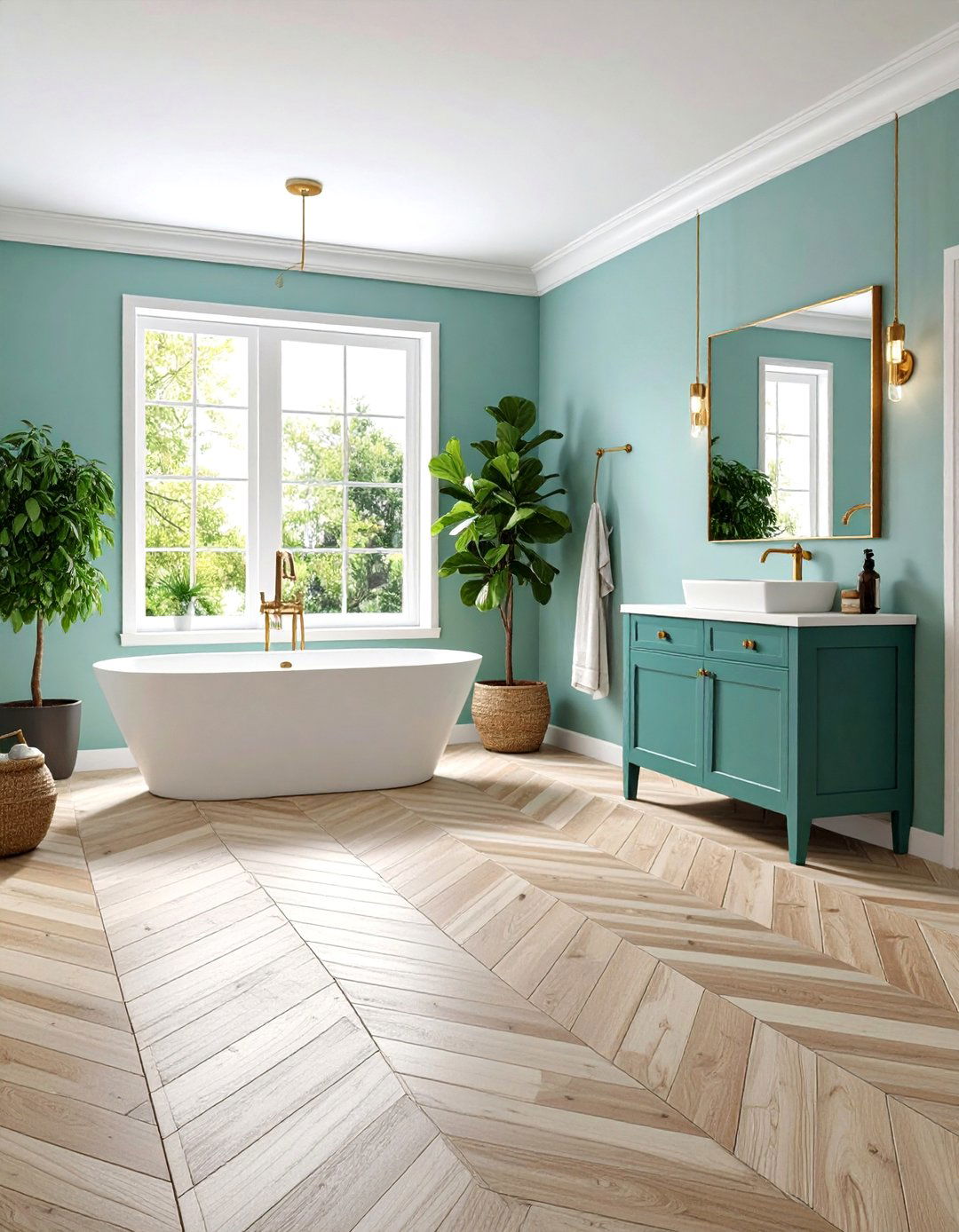
For a floor that feels custom without premium materials, arrange porcelain, vinyl, or stone planks in a classic herringbone. The pattern’s zig-zag diverts the eye from narrow room proportions and disguises any subtle plank color variation. Dry-lay a few rows first to determine the exact 45-degree starting point; even a slight skew compounds over the whole floor.
Conclusion:
Smart bathroom flooring blends practicality—water resistance, safety, and easy upkeep—with the personality that drives daily delight. Whether you favor enduring porcelain, spa-like pebble textures, or modern microcement minimalism, each idea above equips you with the key benefits, caveats, and pro tips to make a confident, lasting choice.


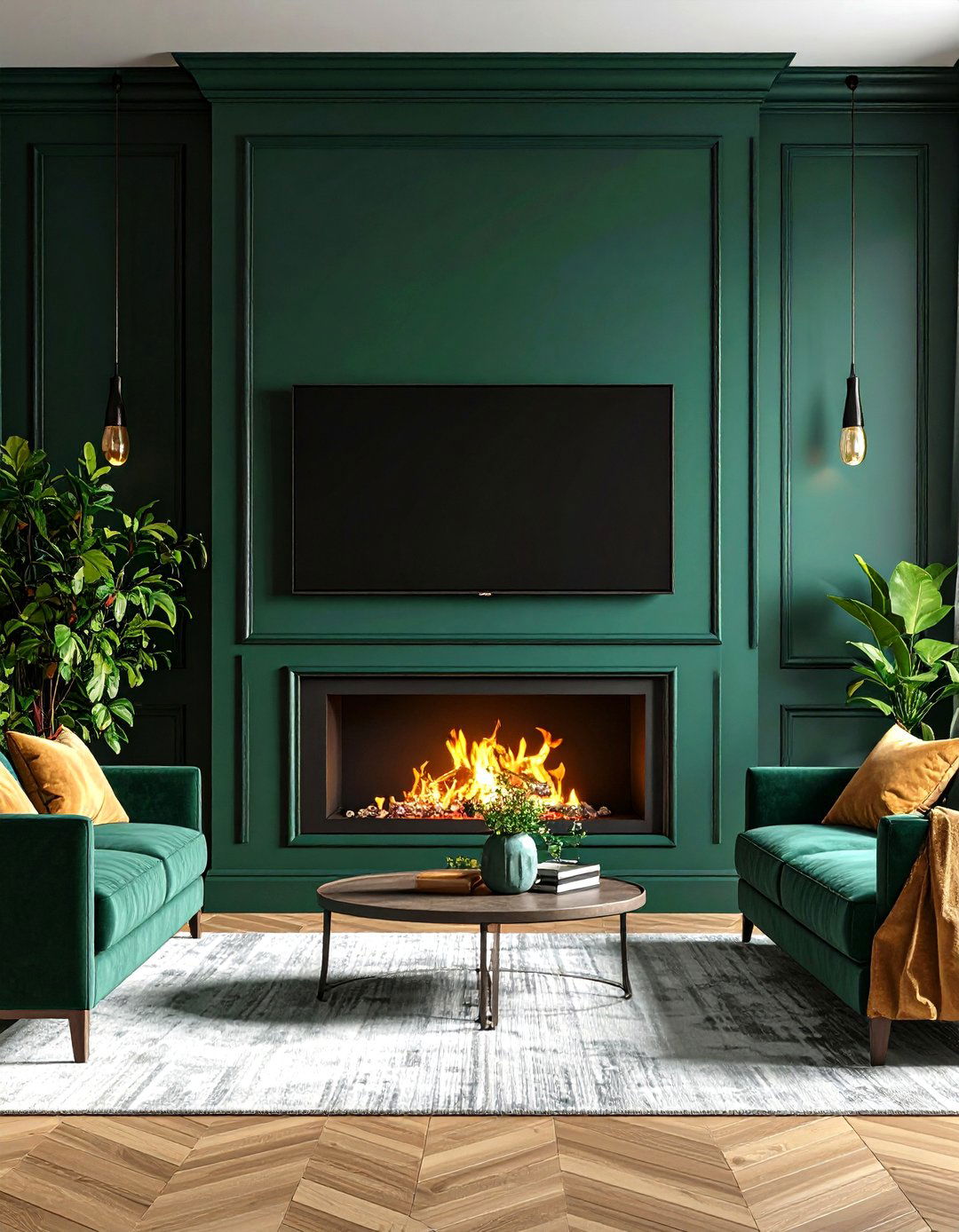
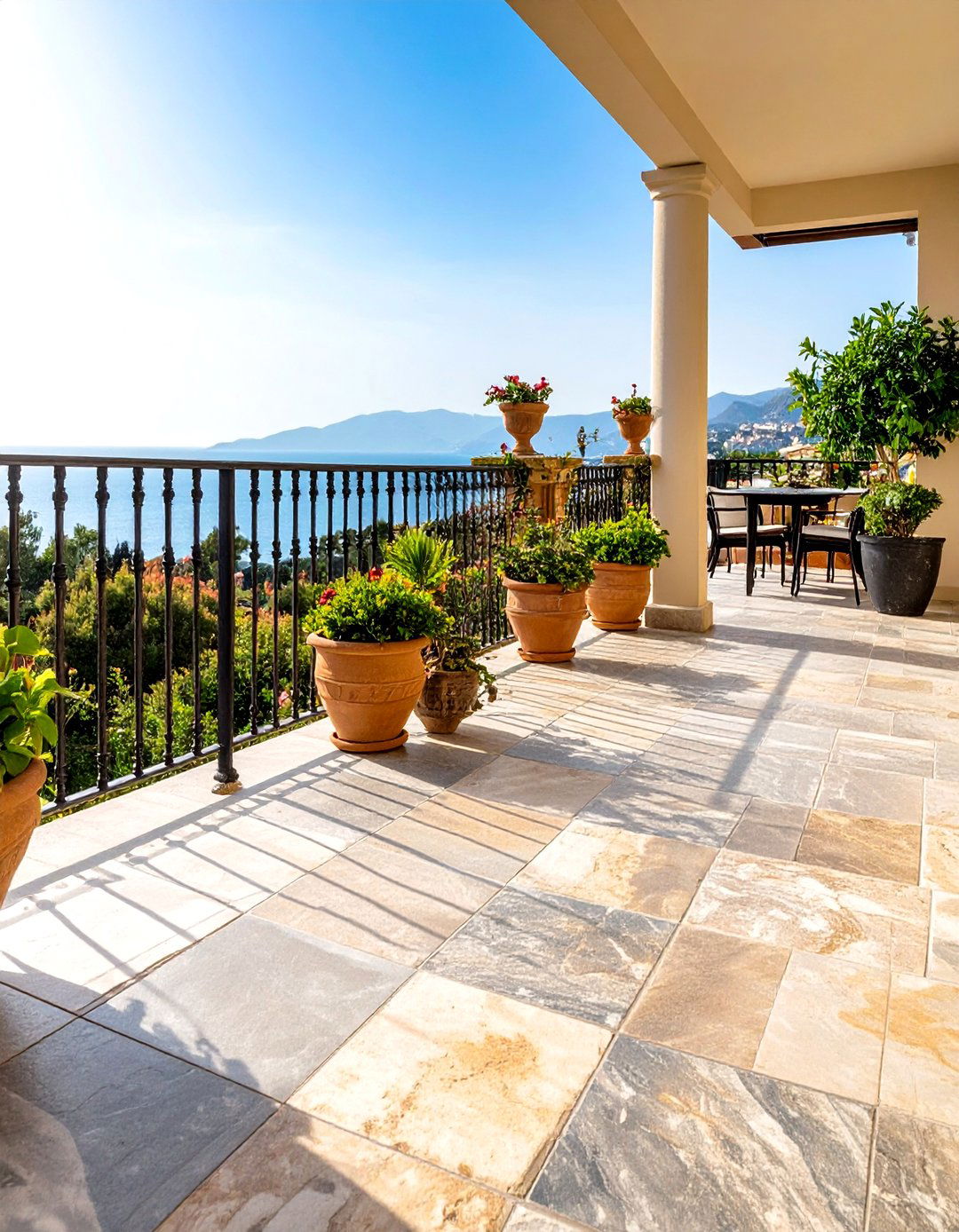
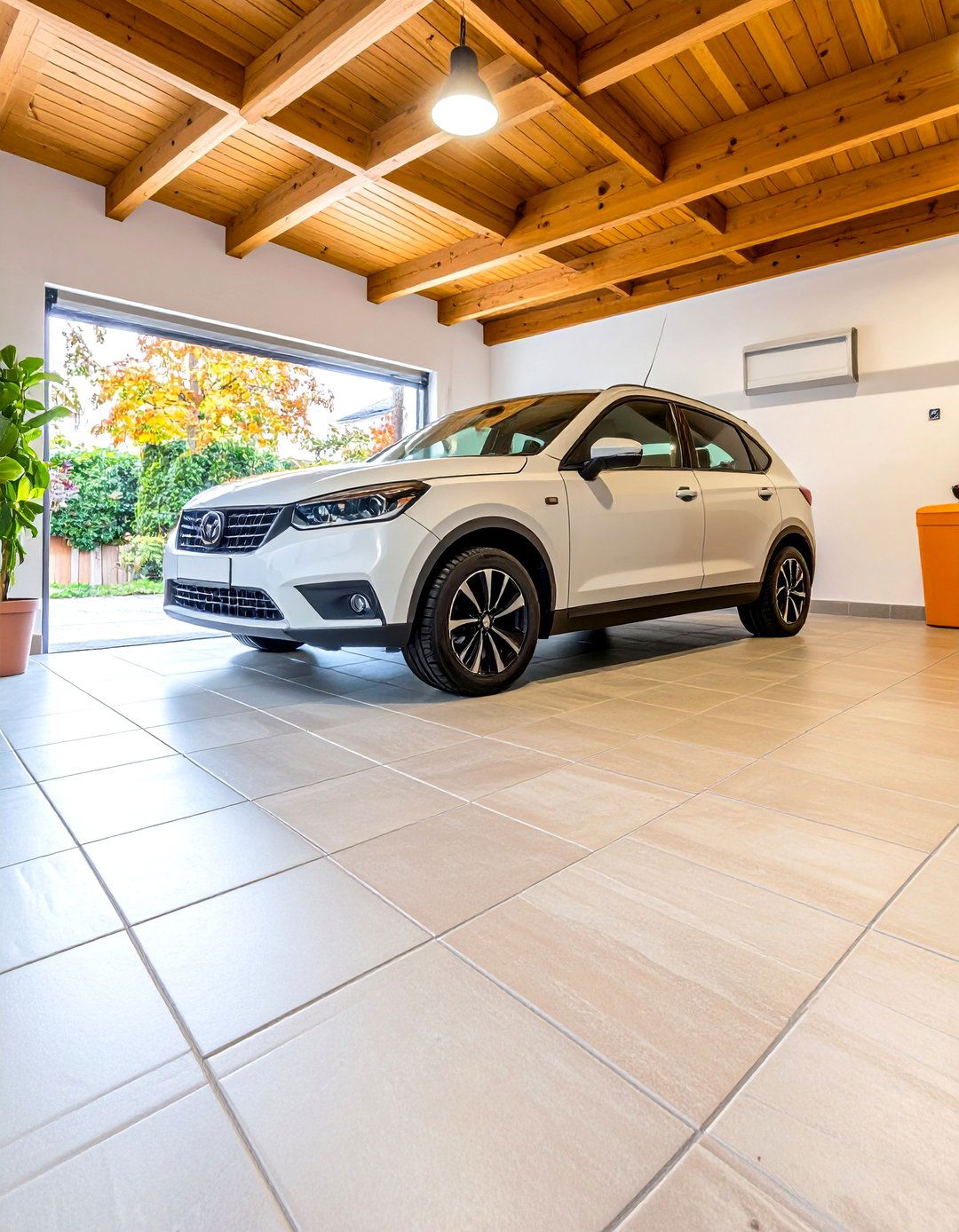
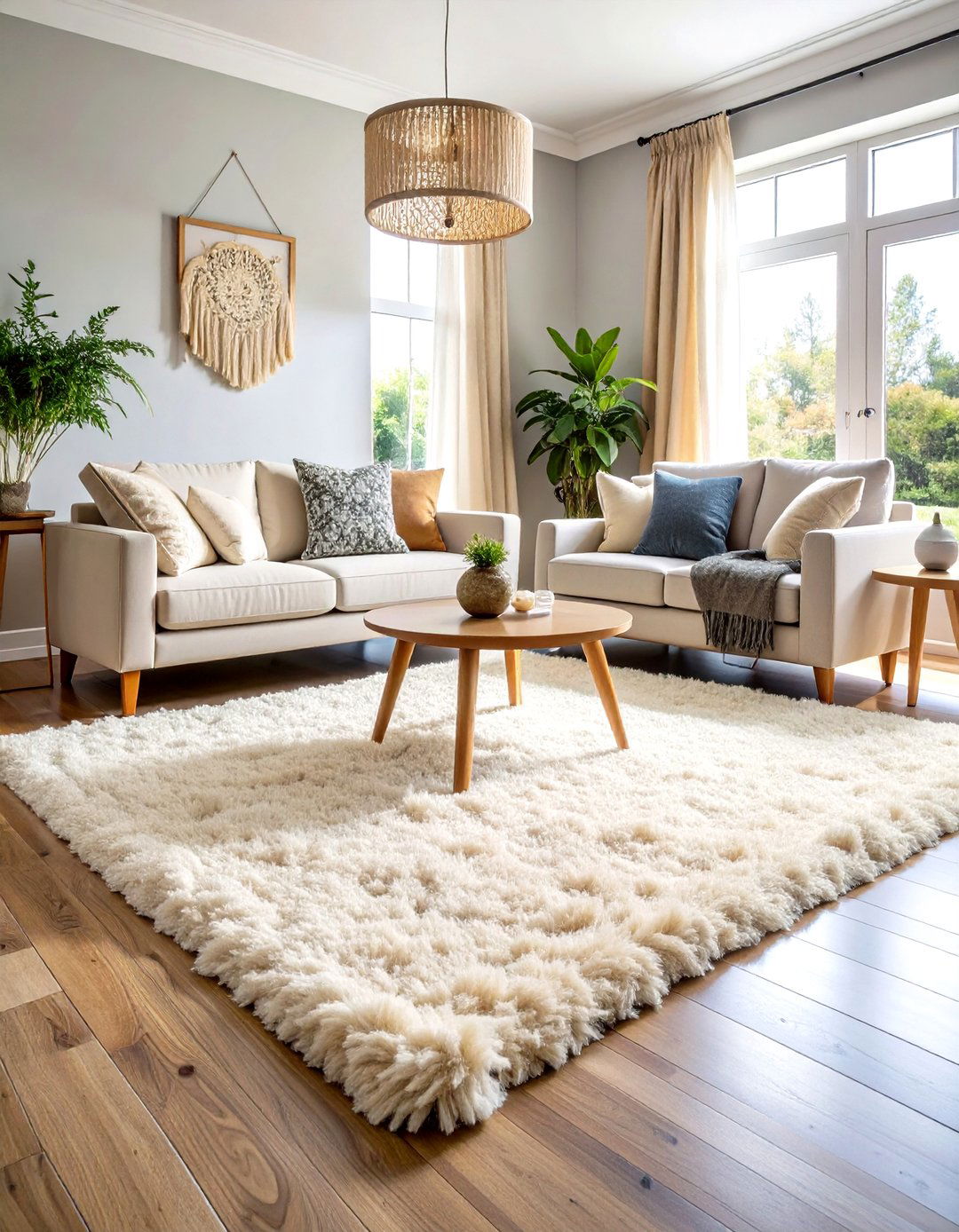
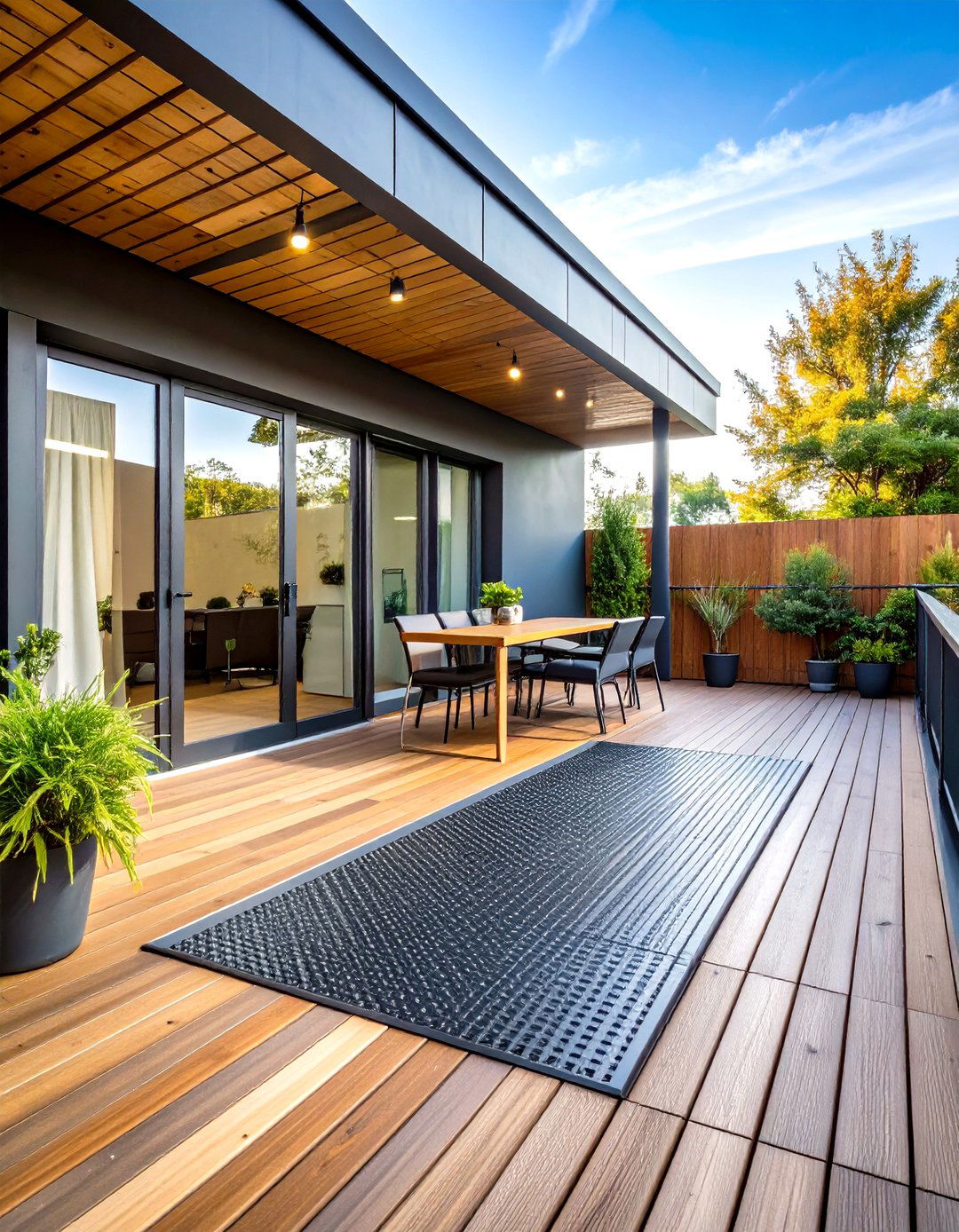
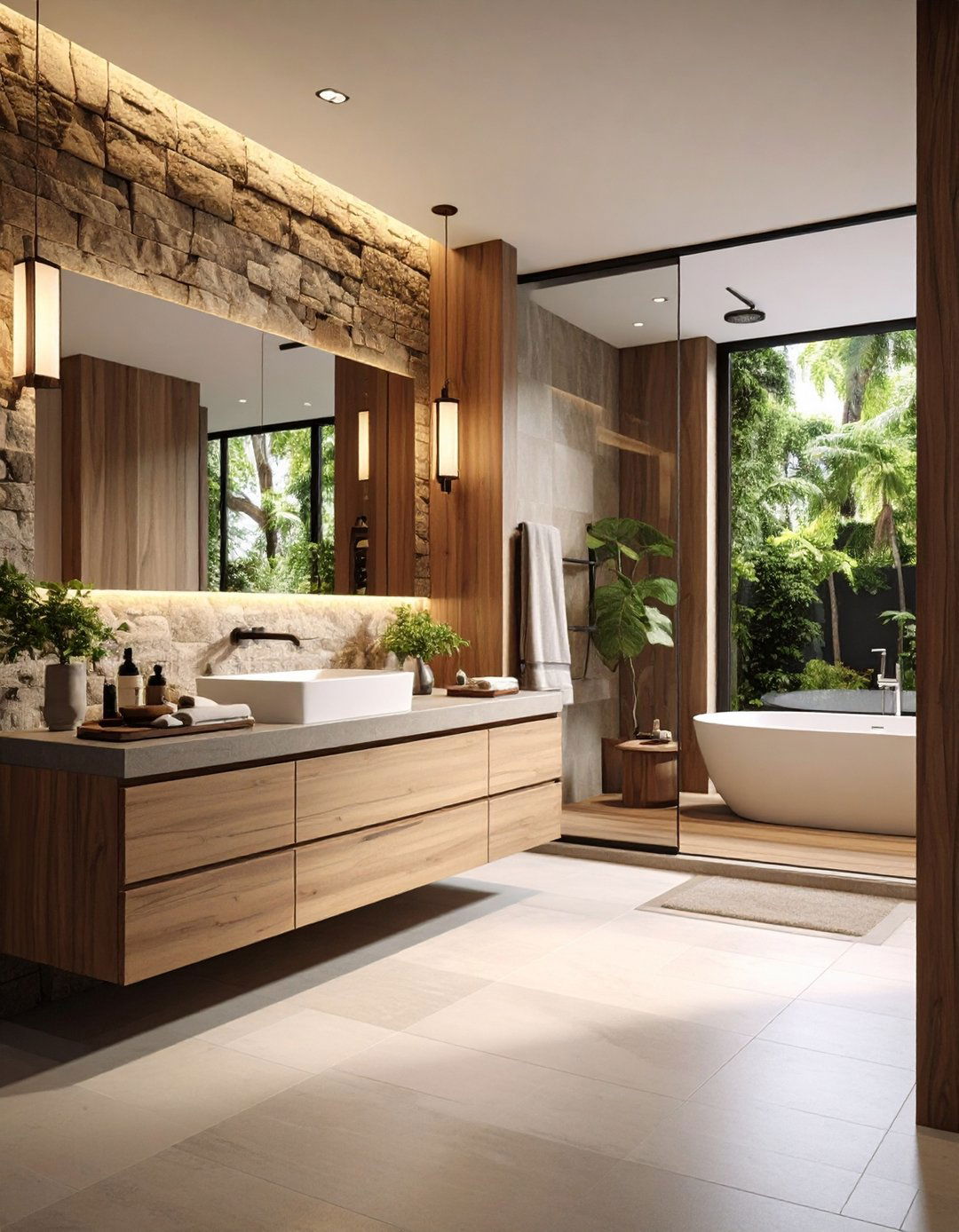
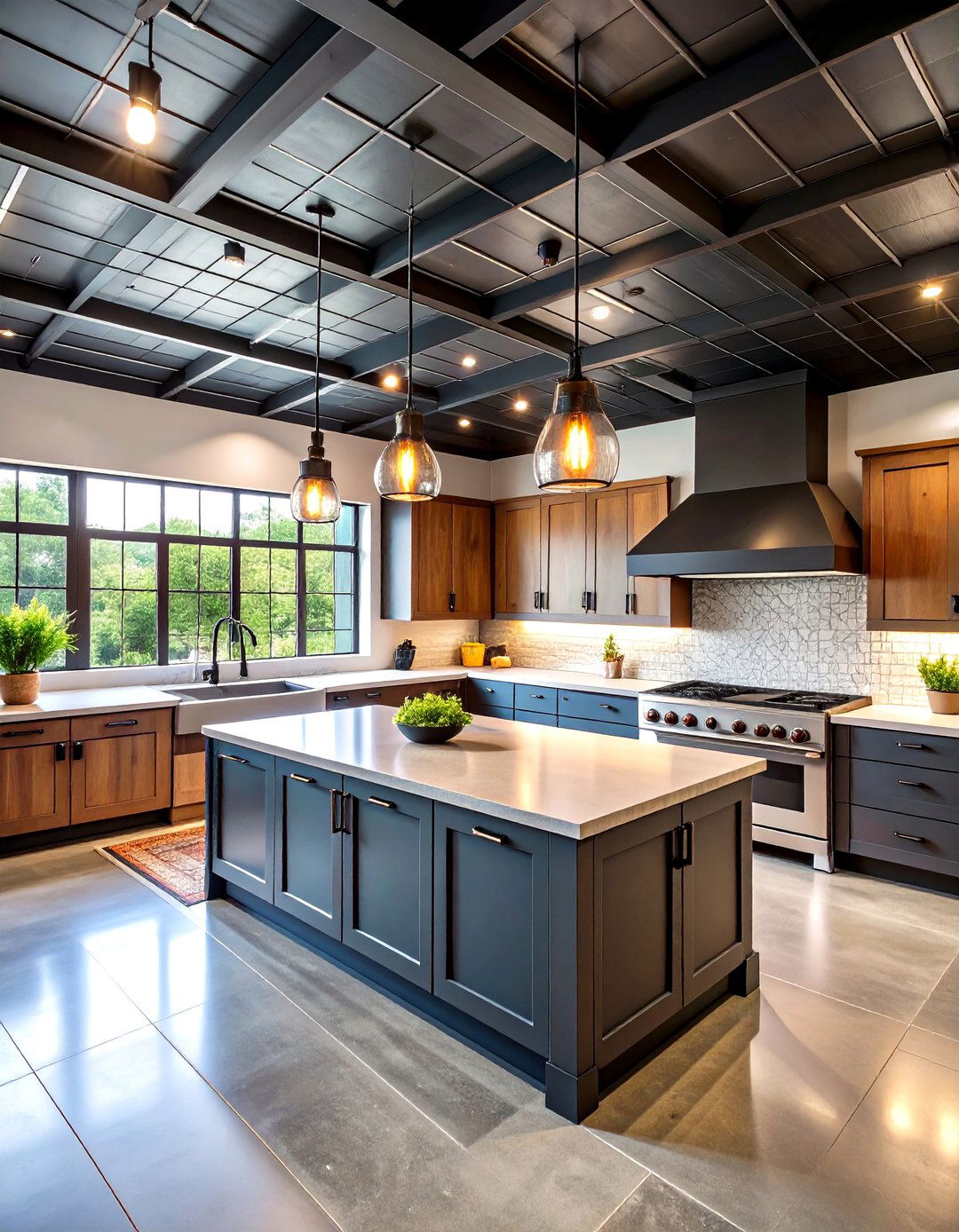
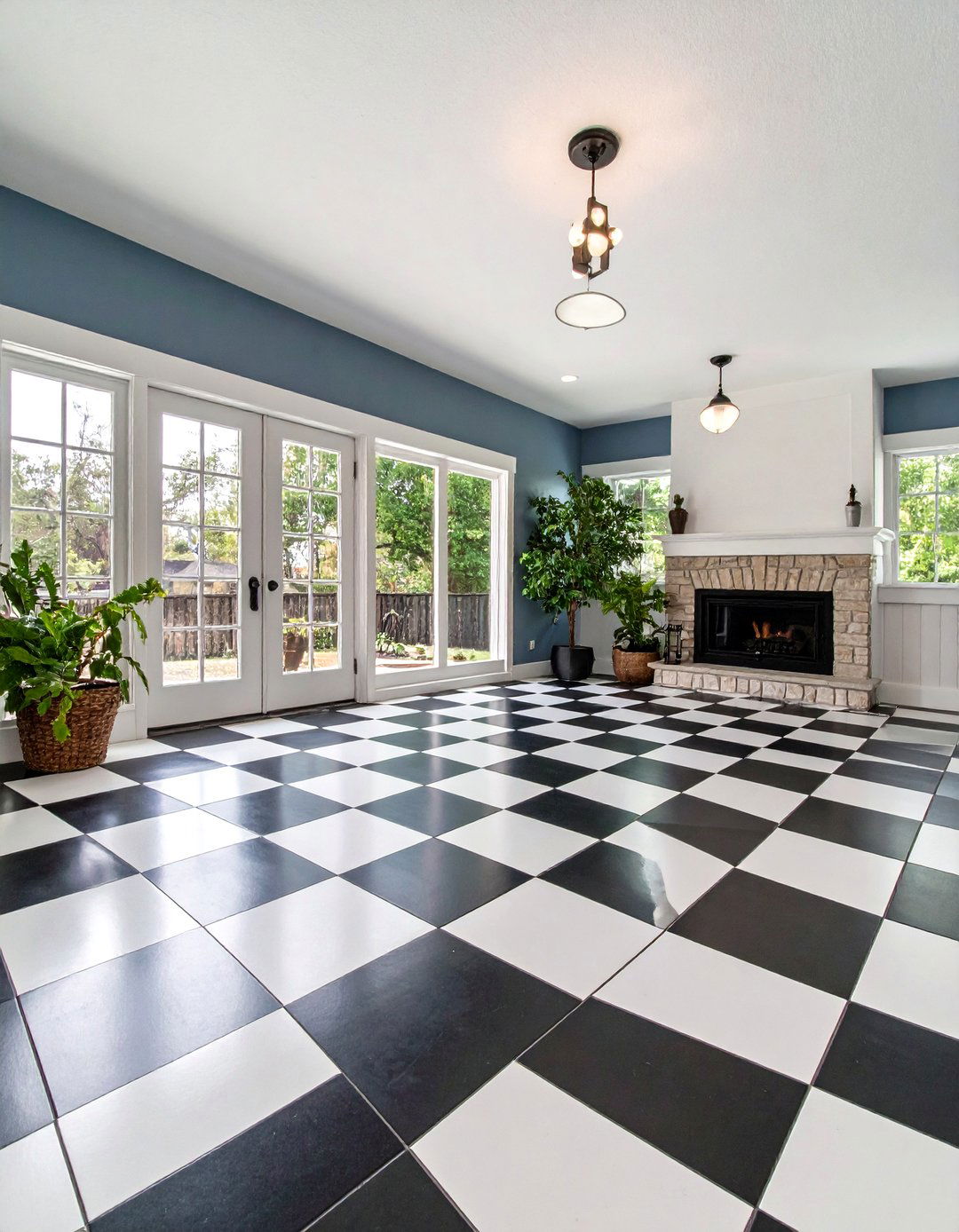


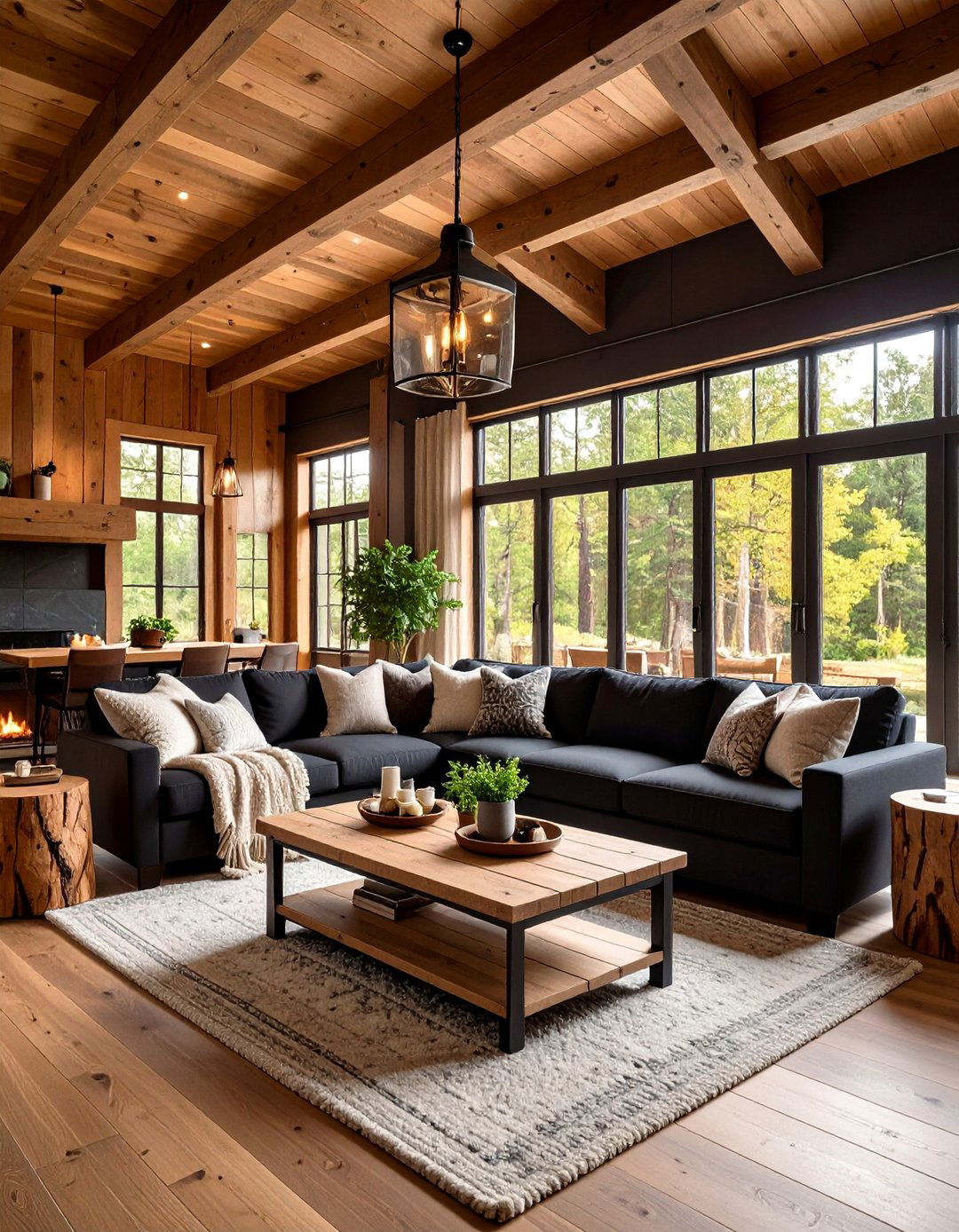
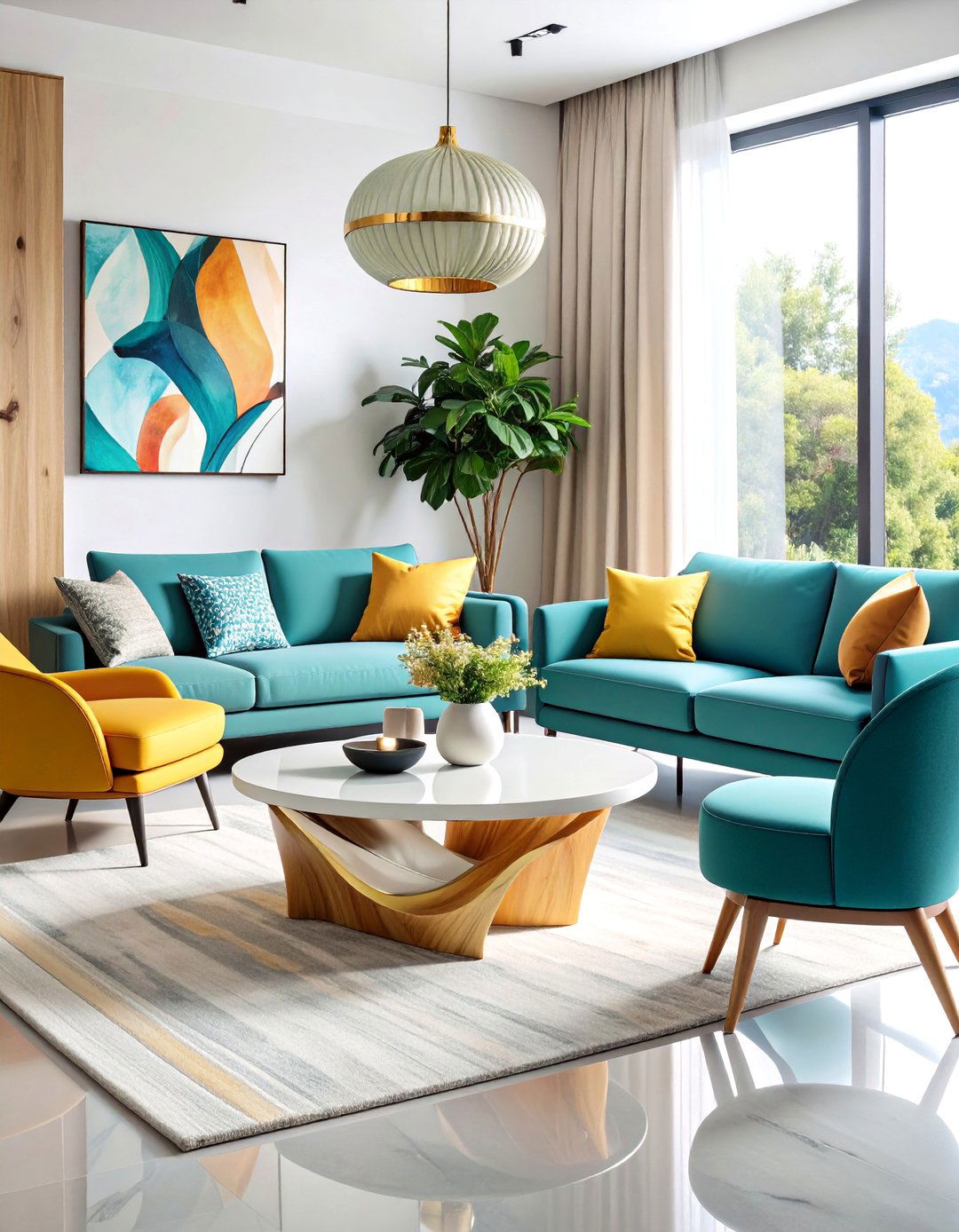
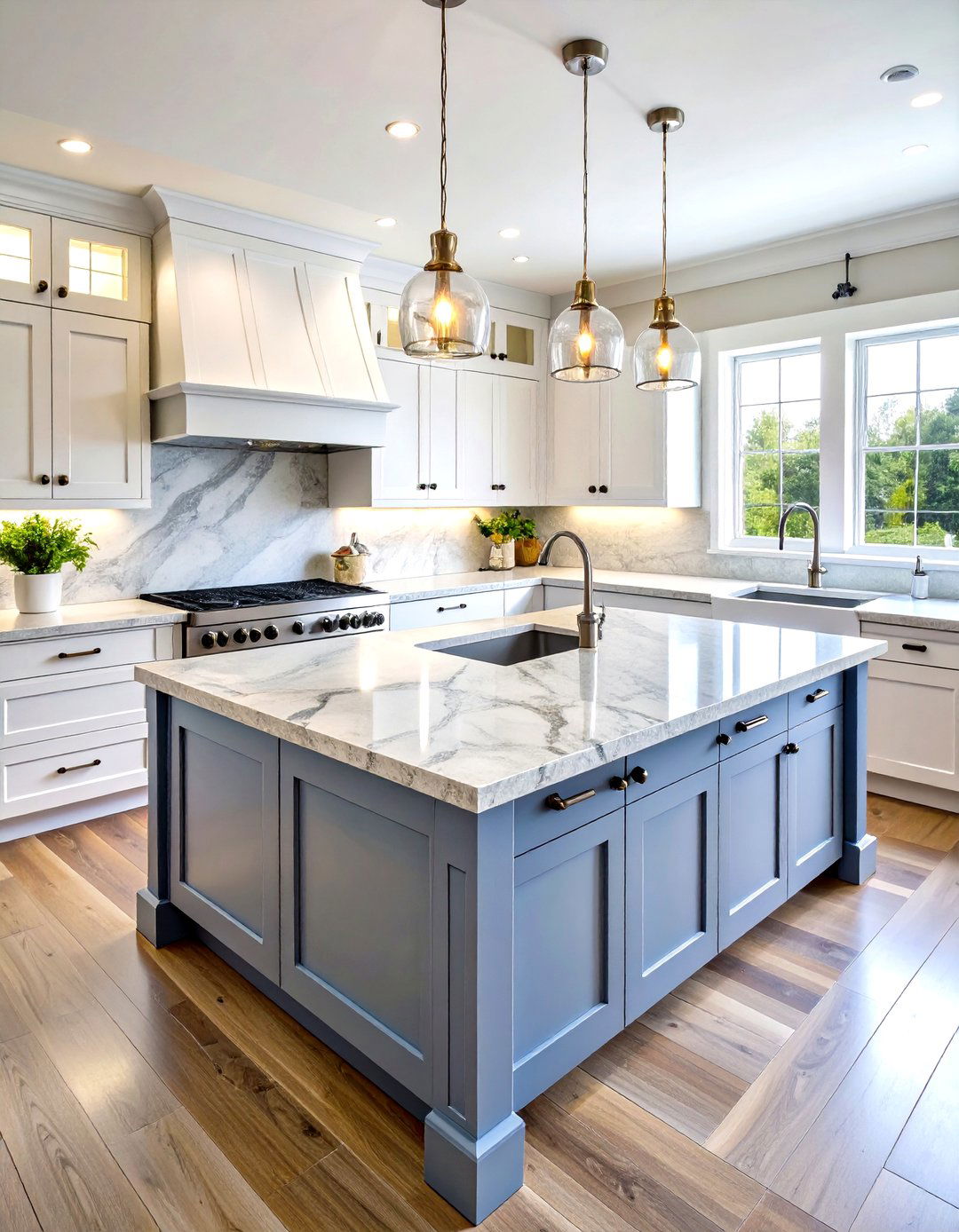
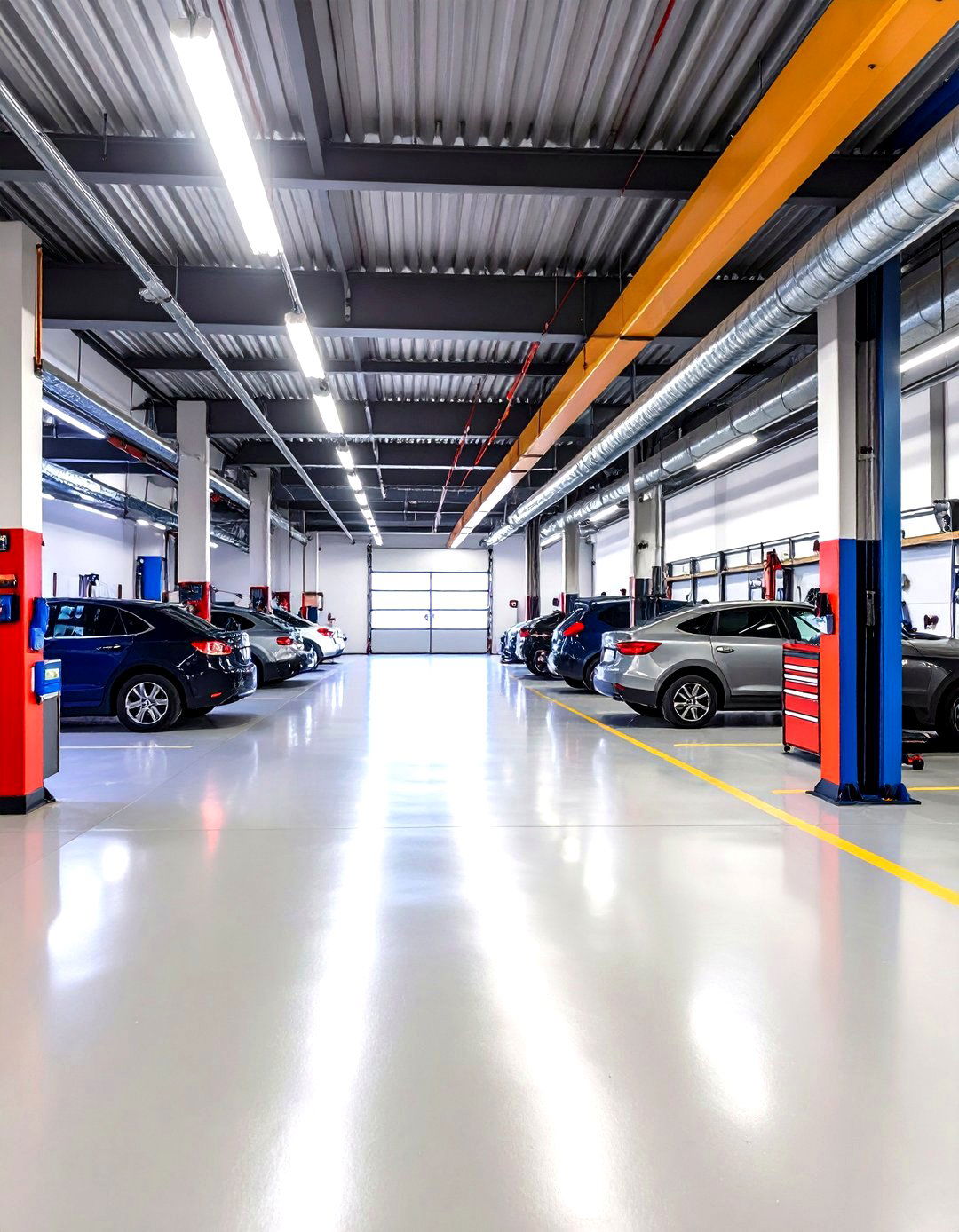

Leave a Reply